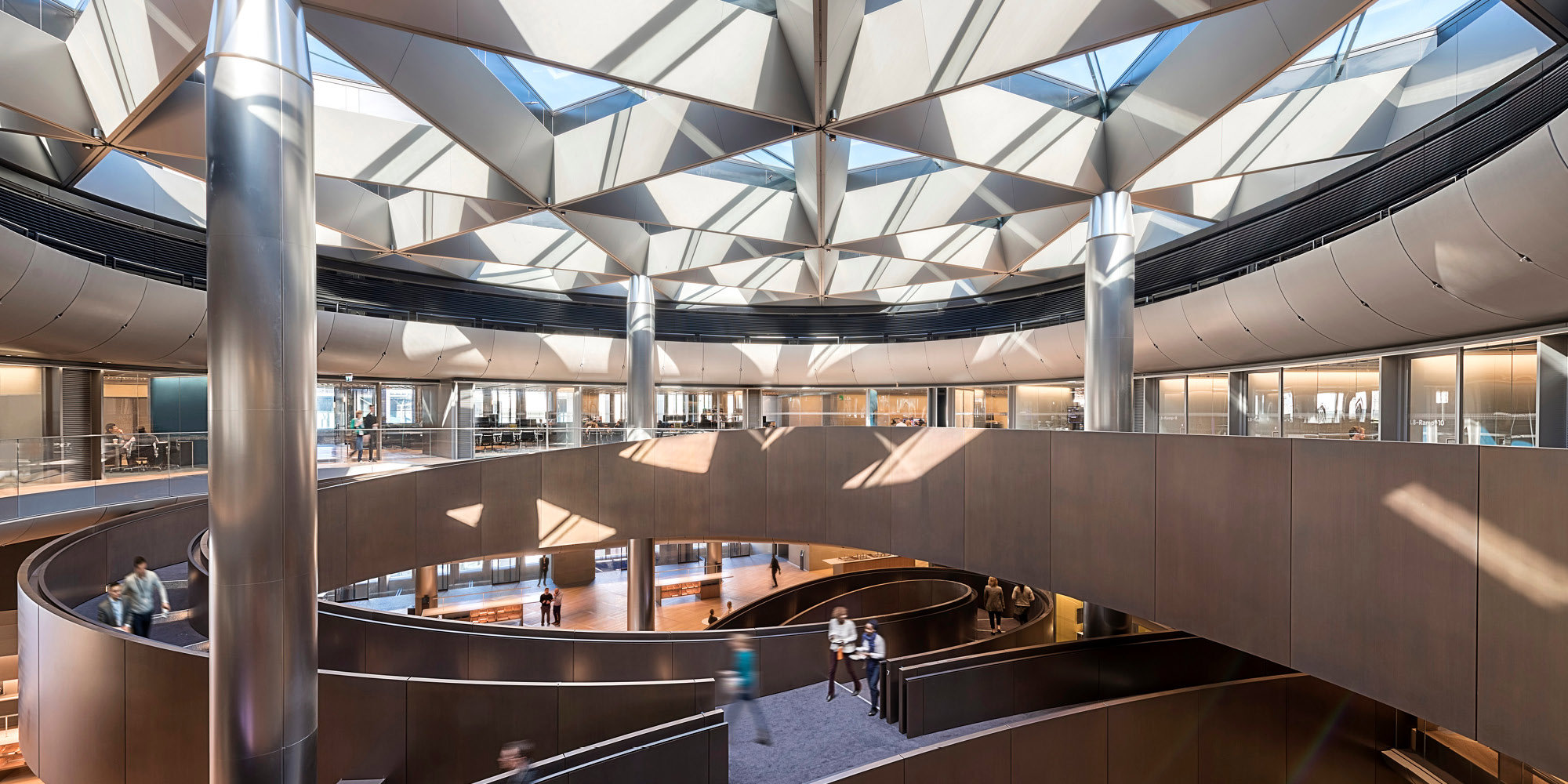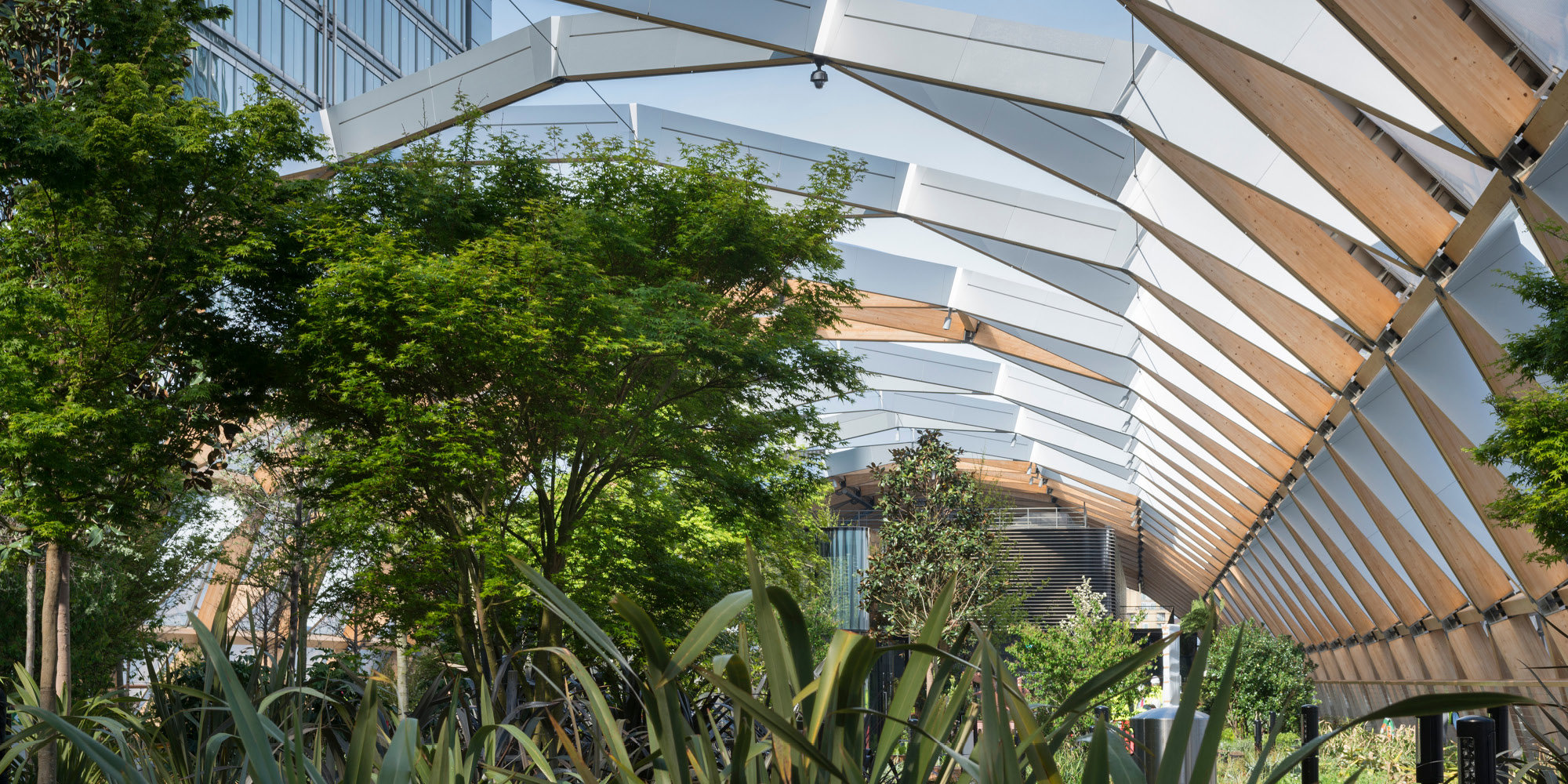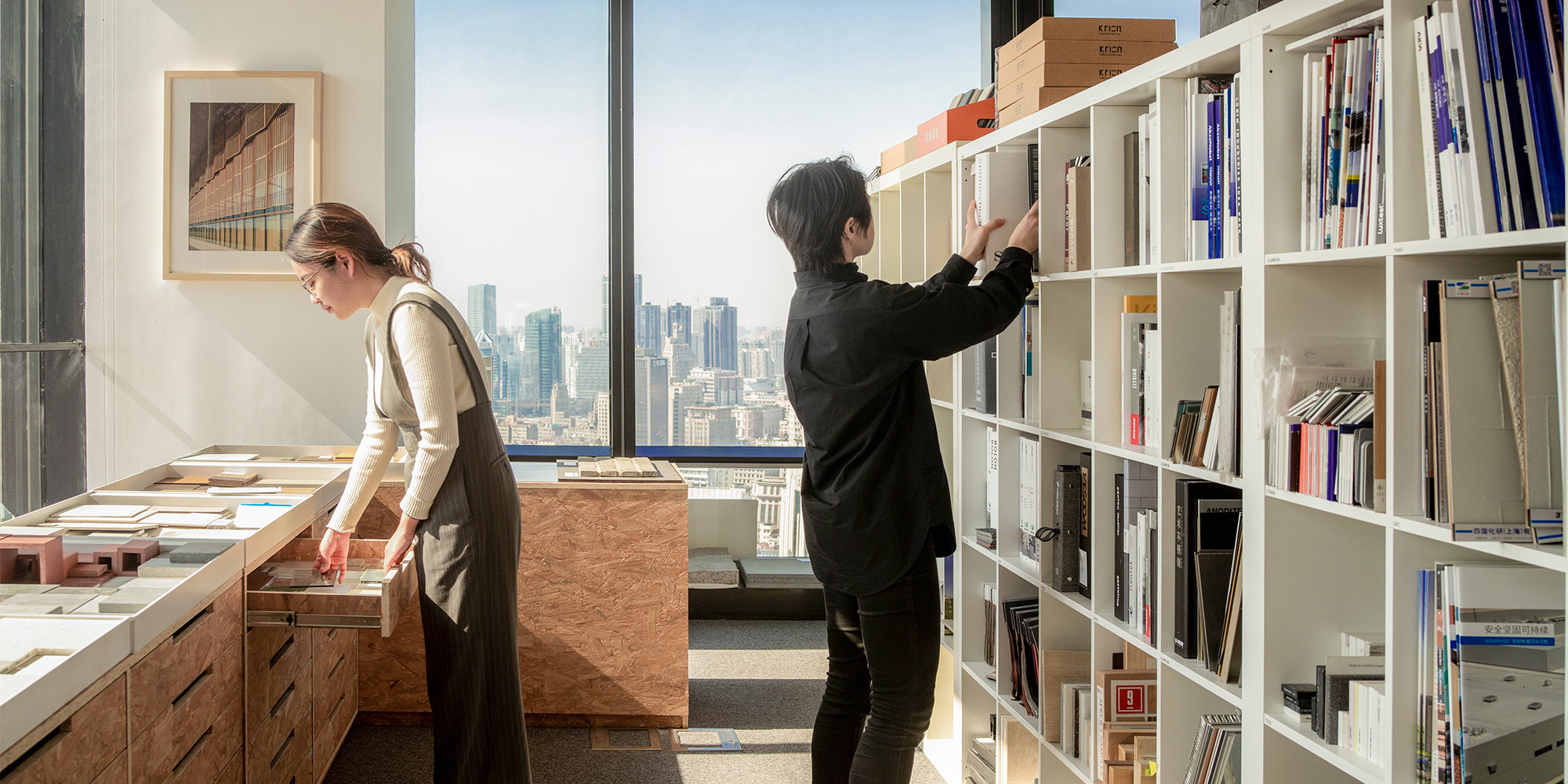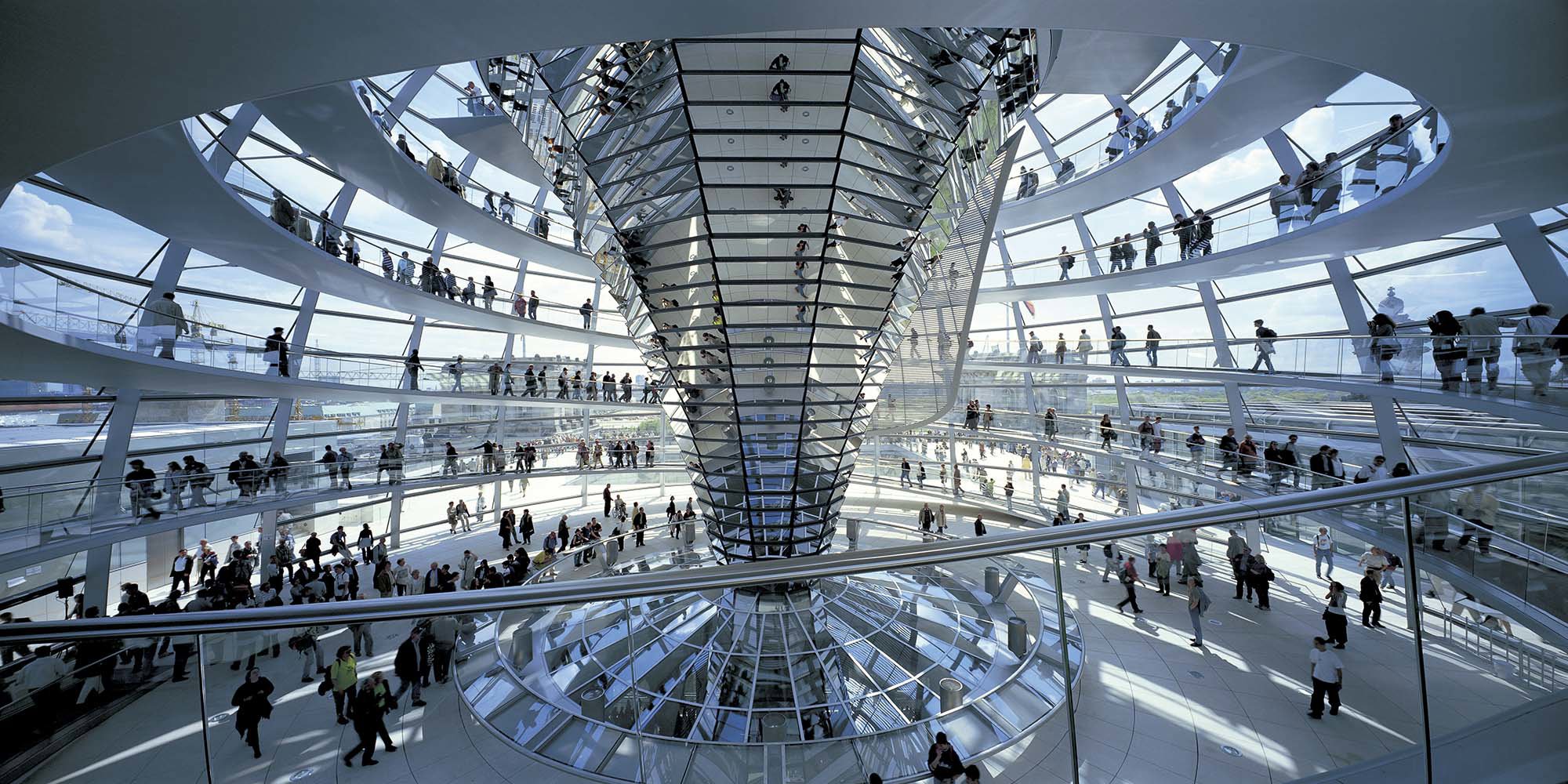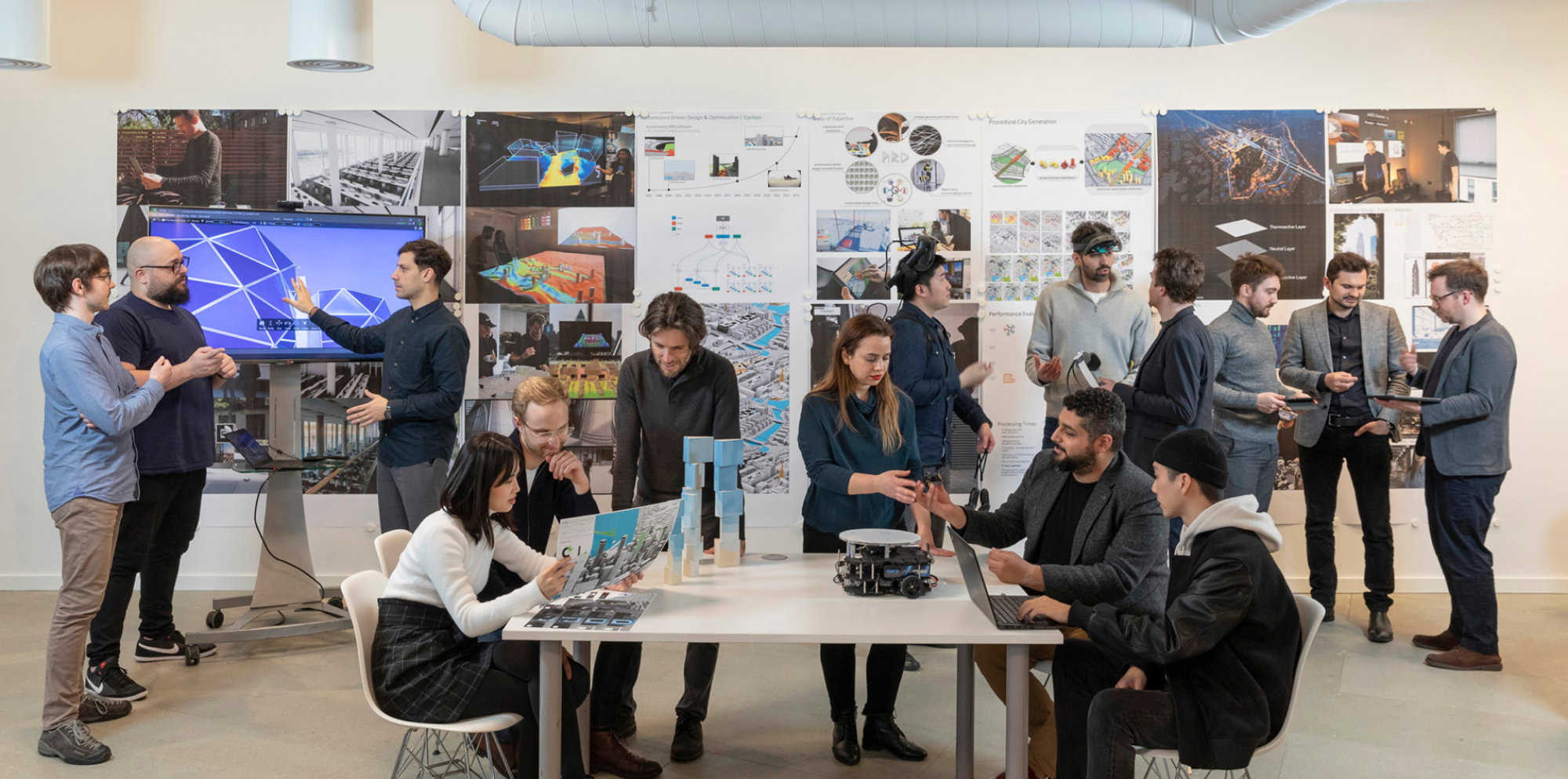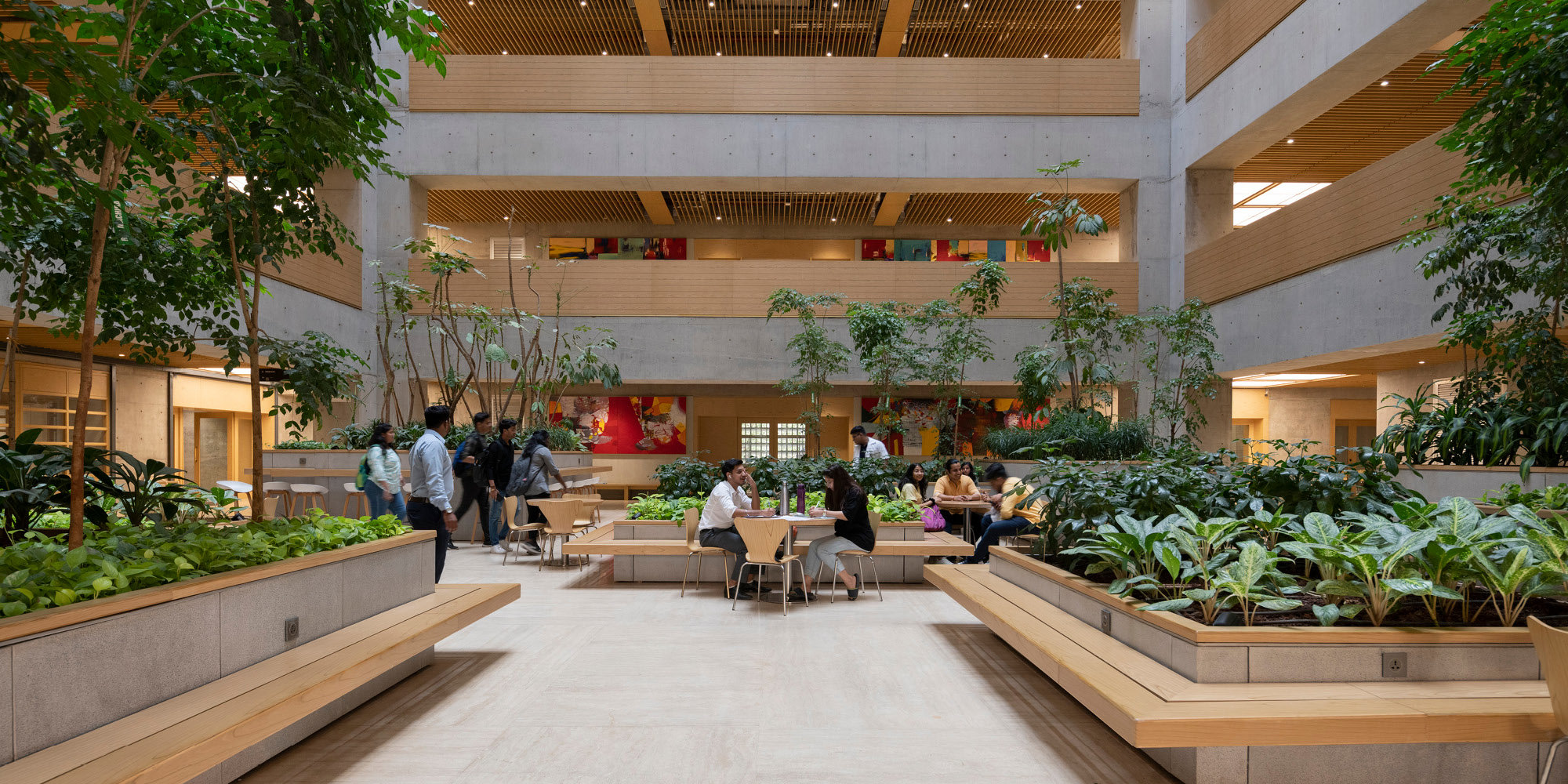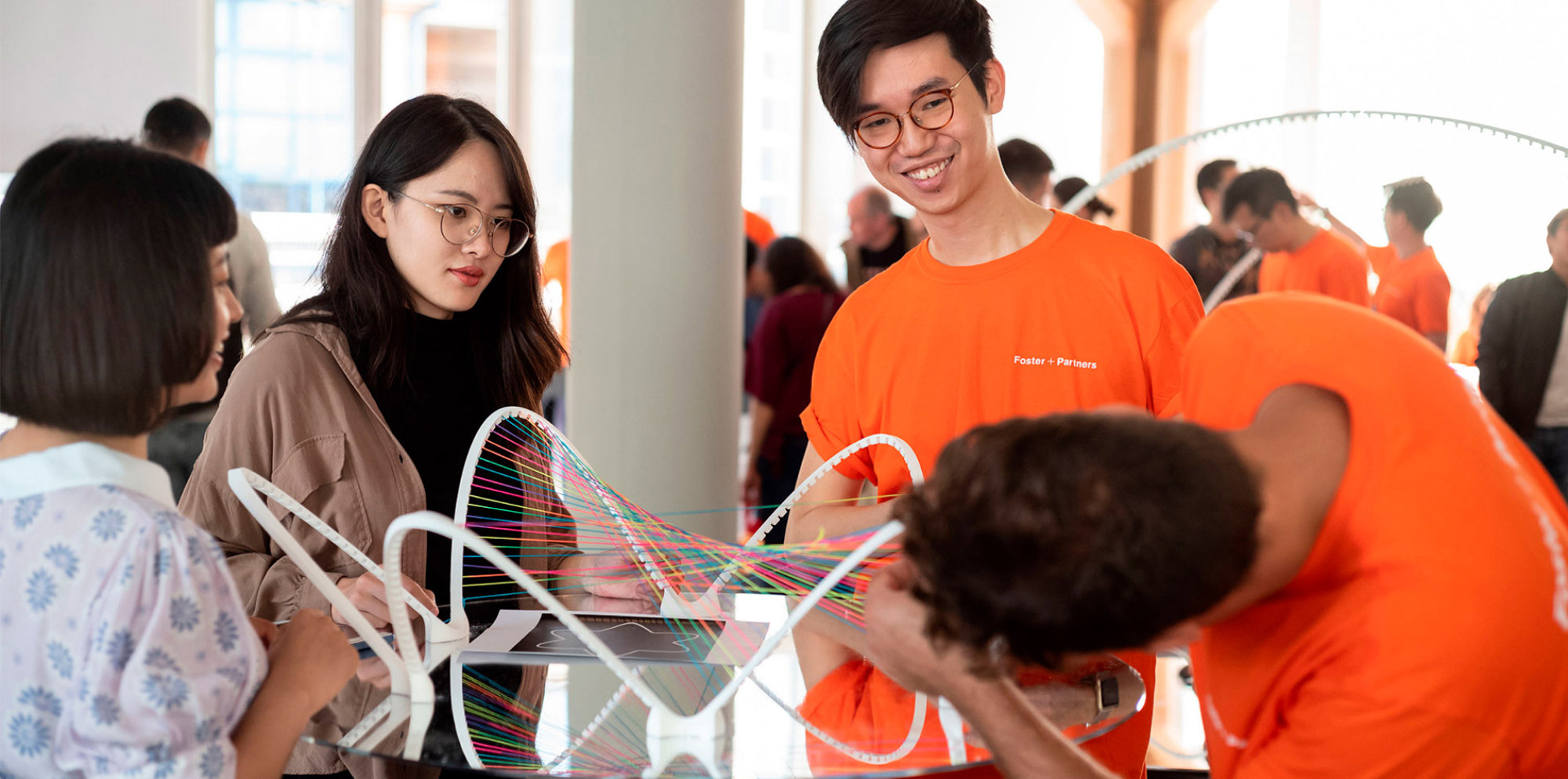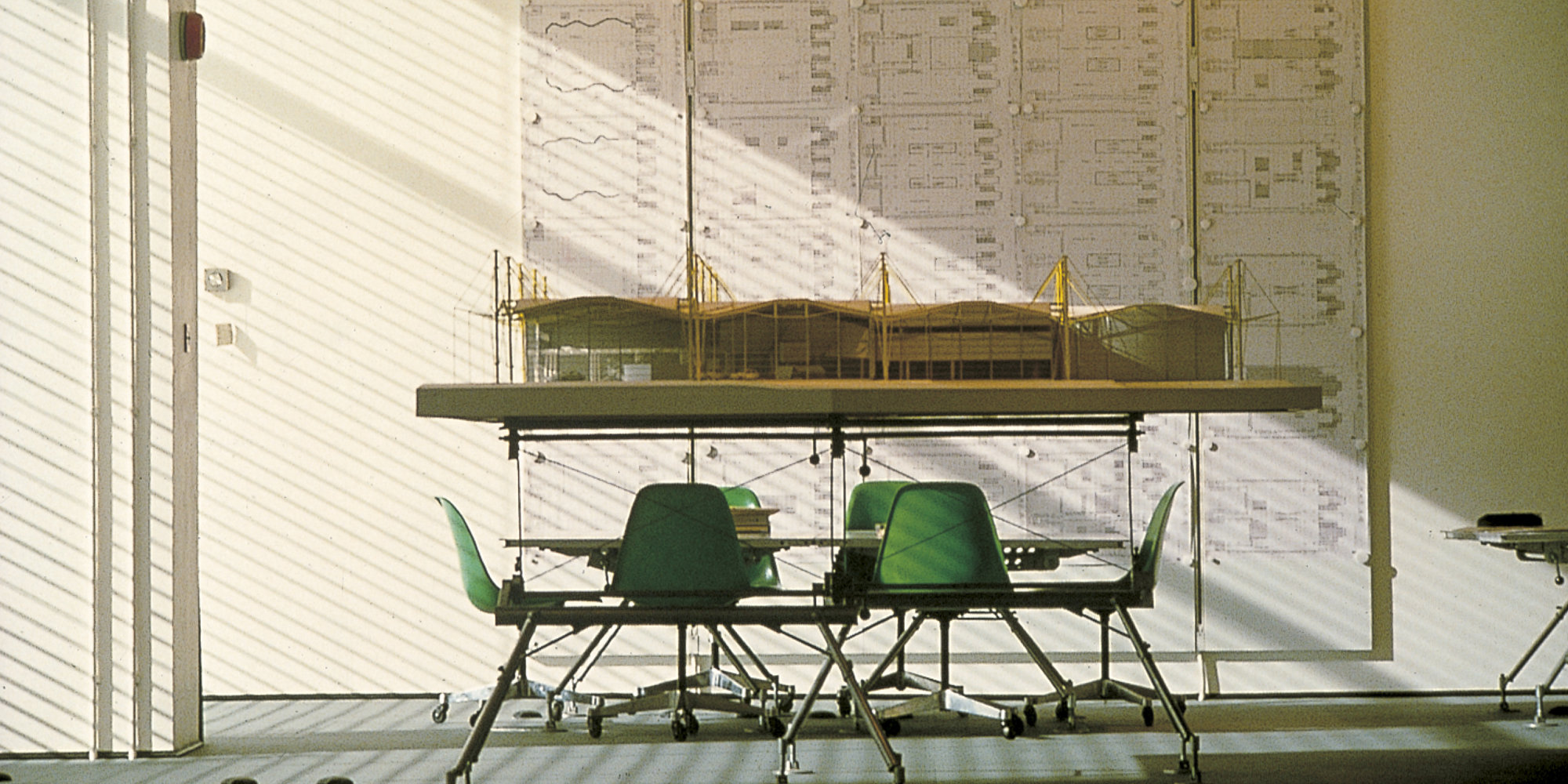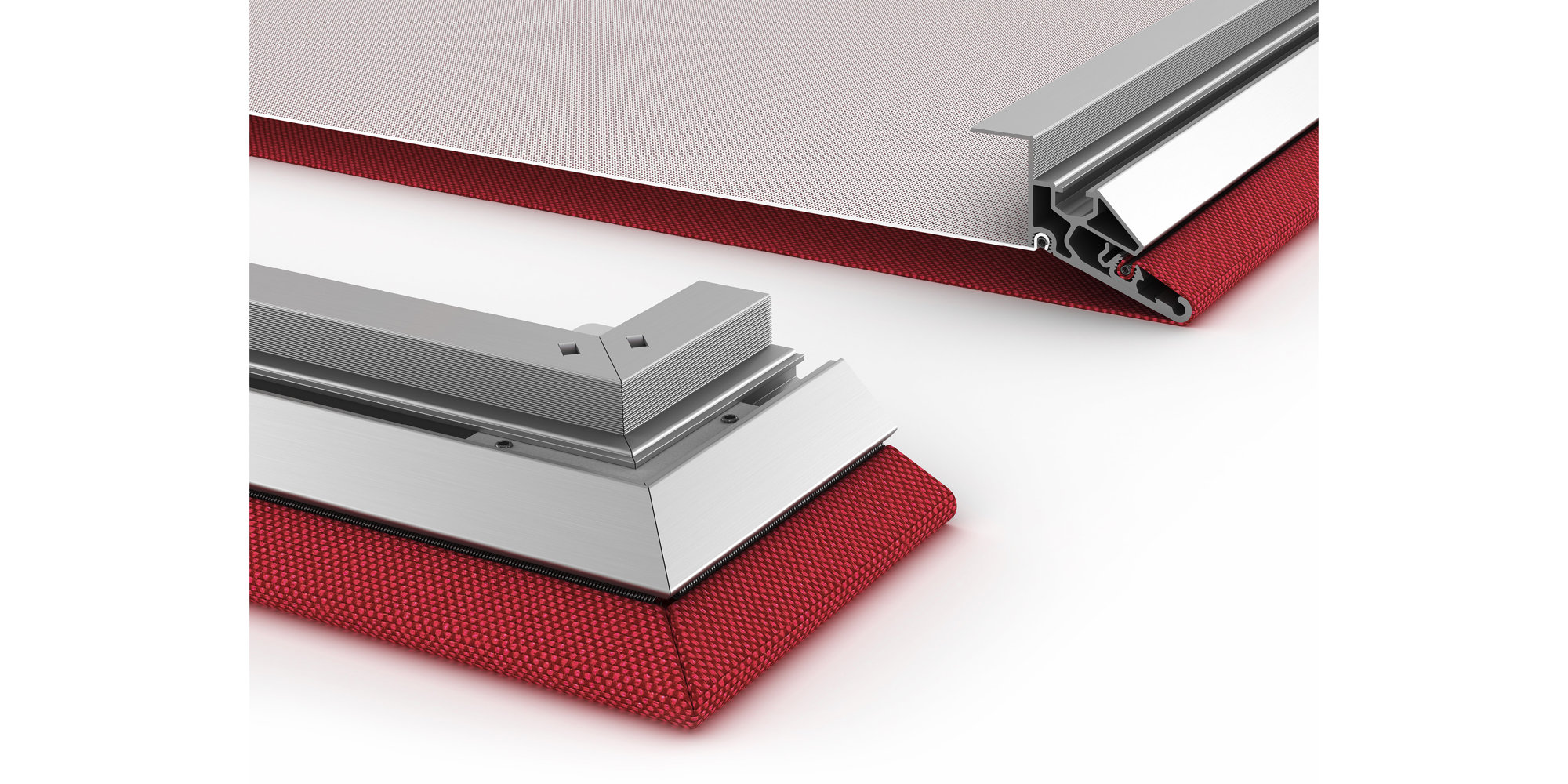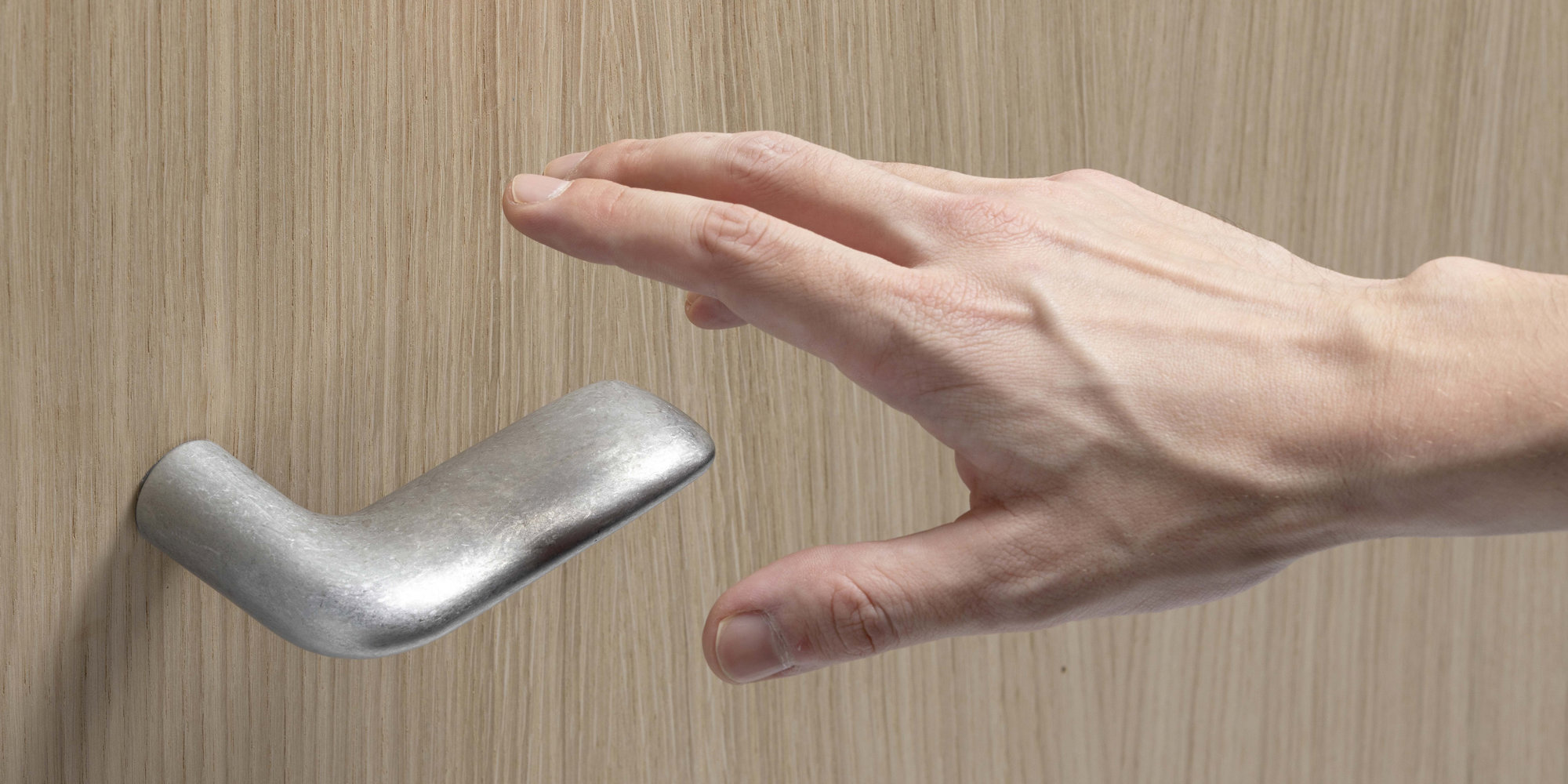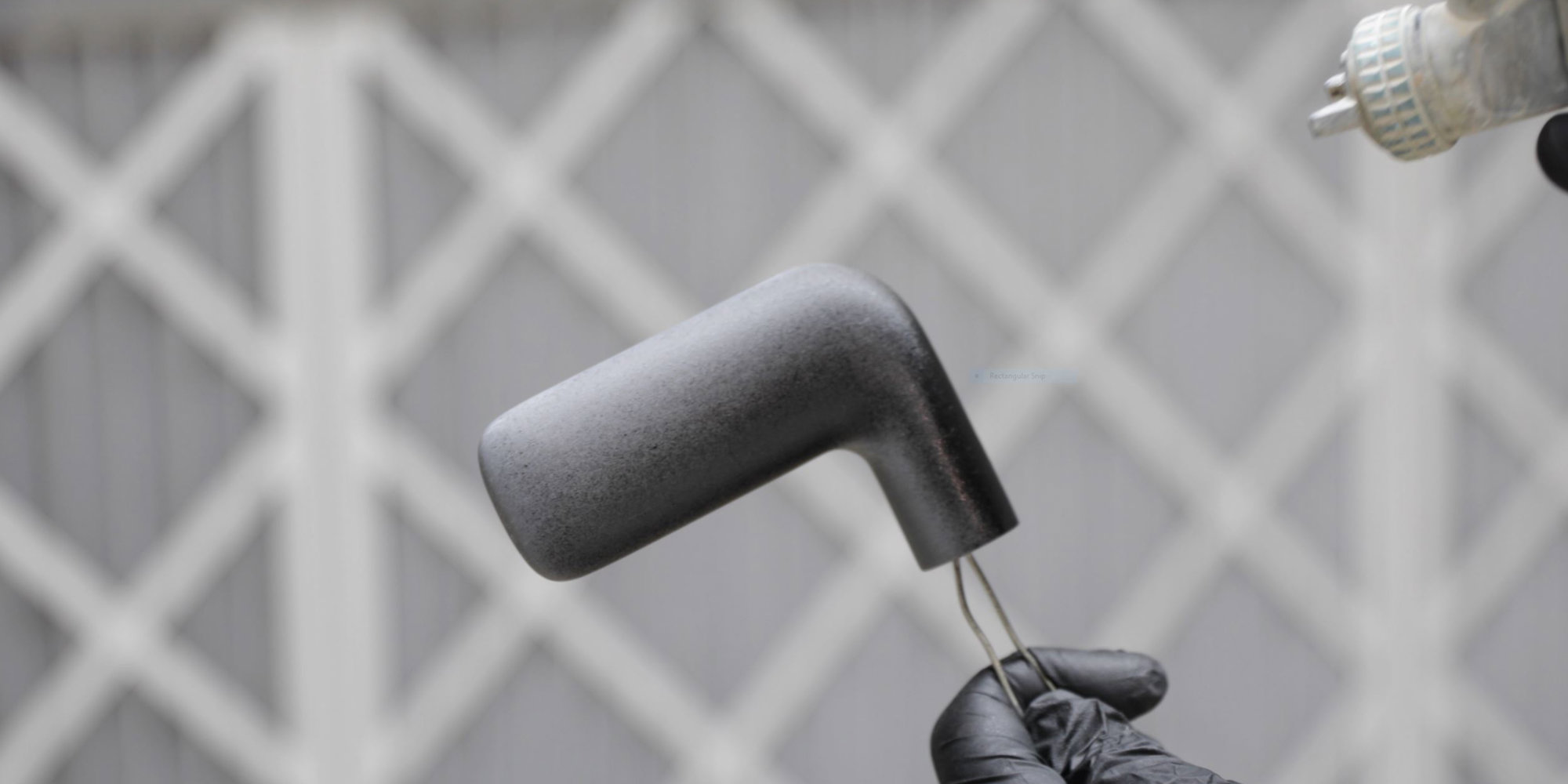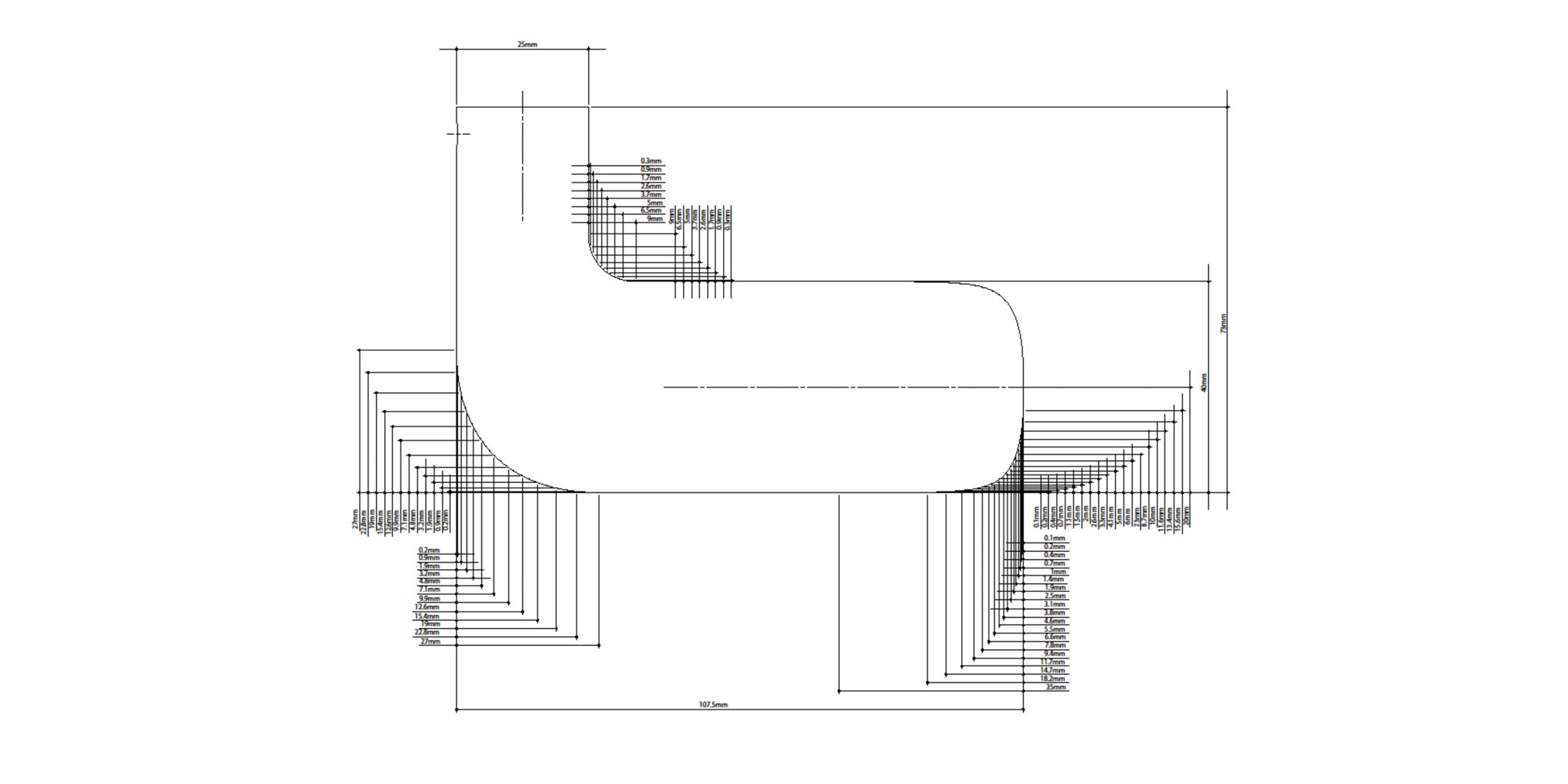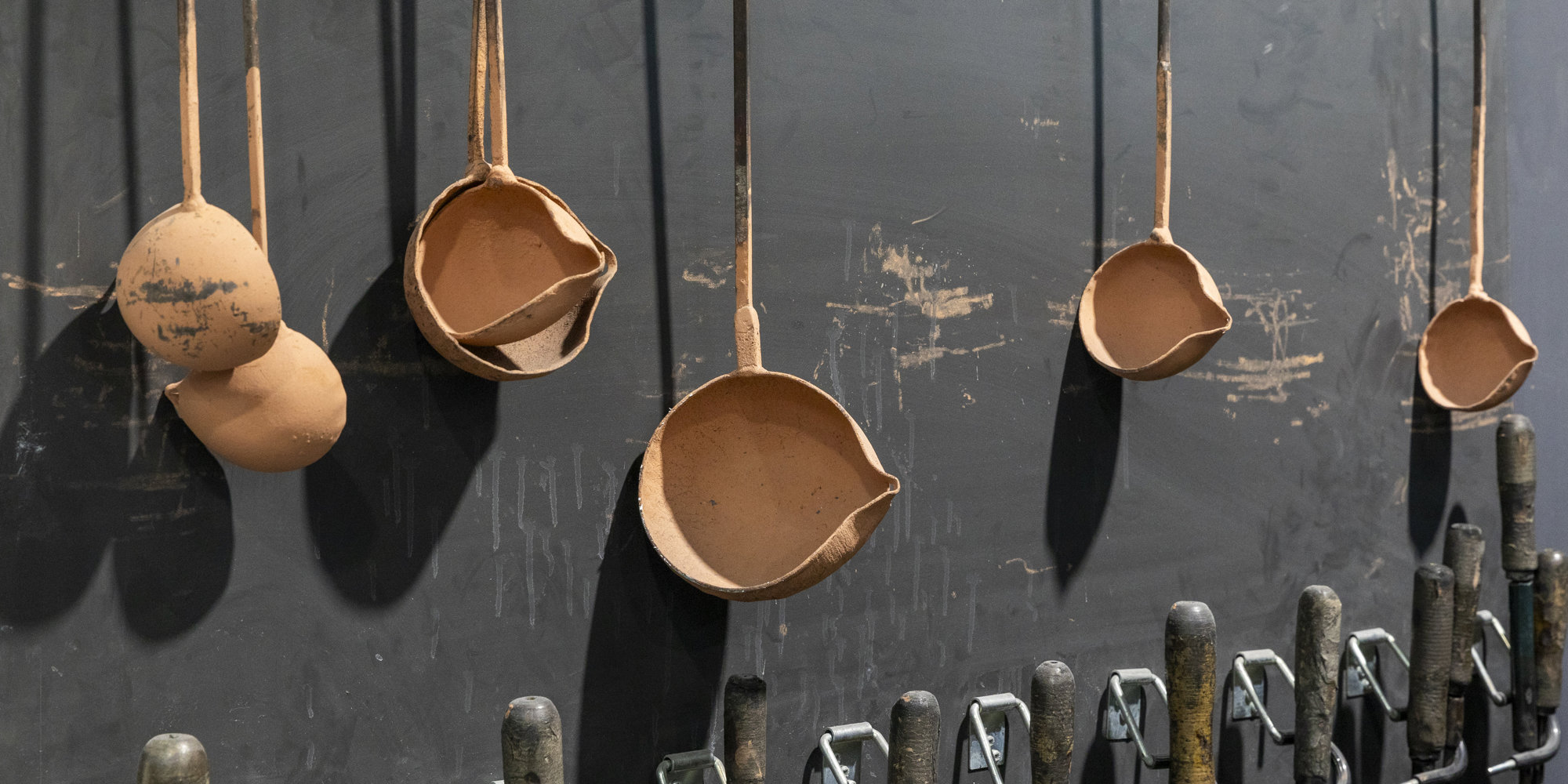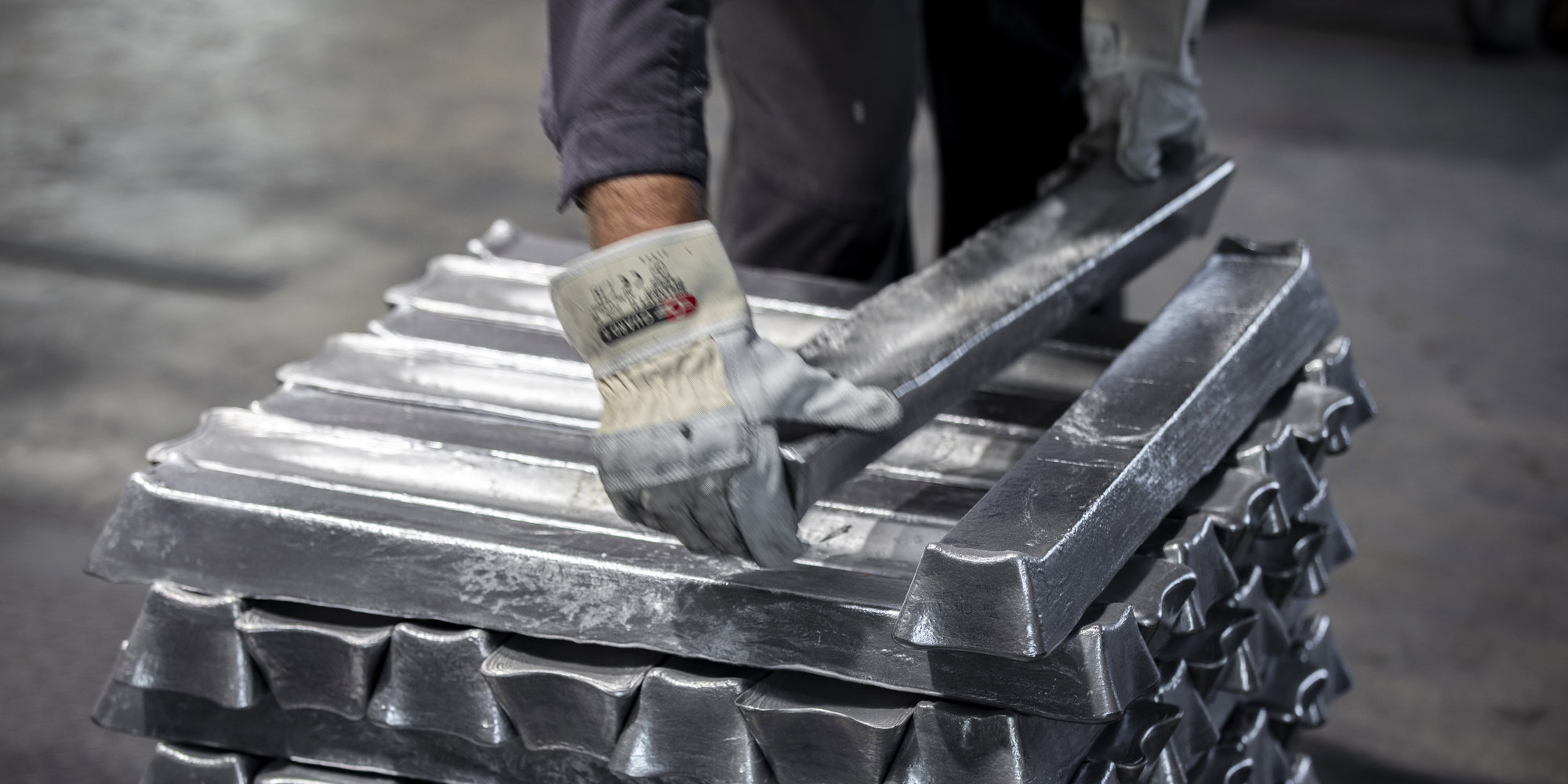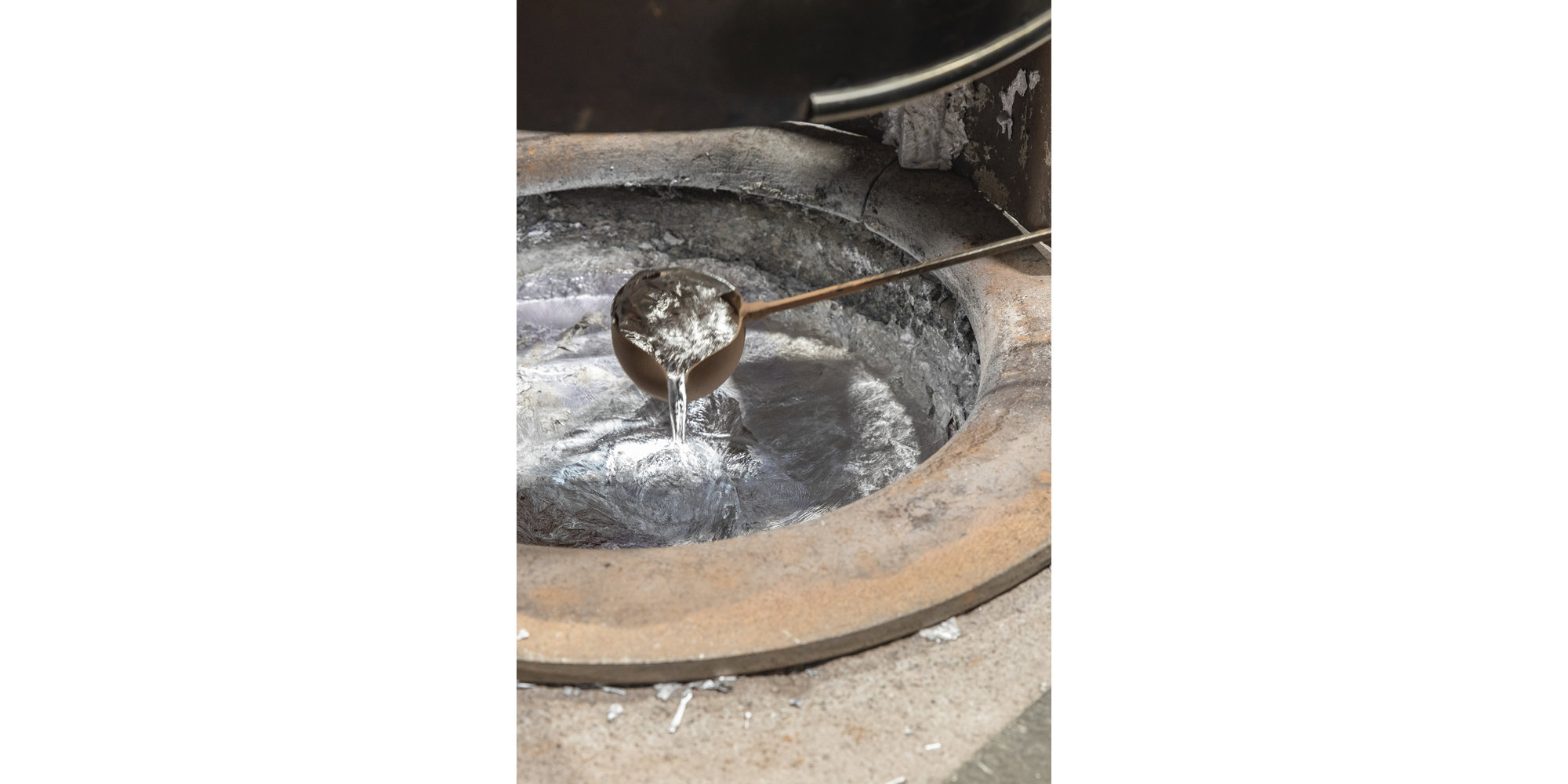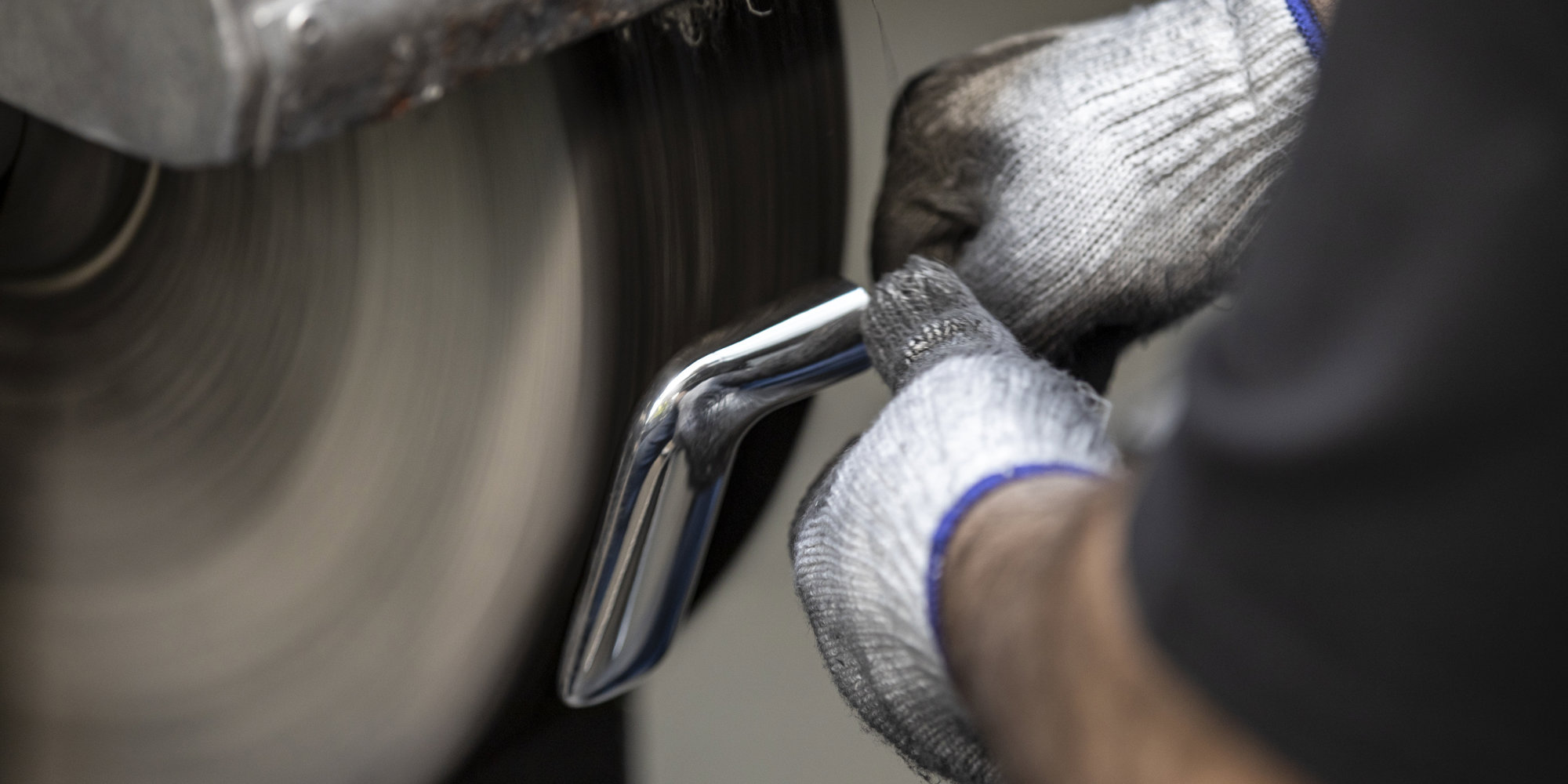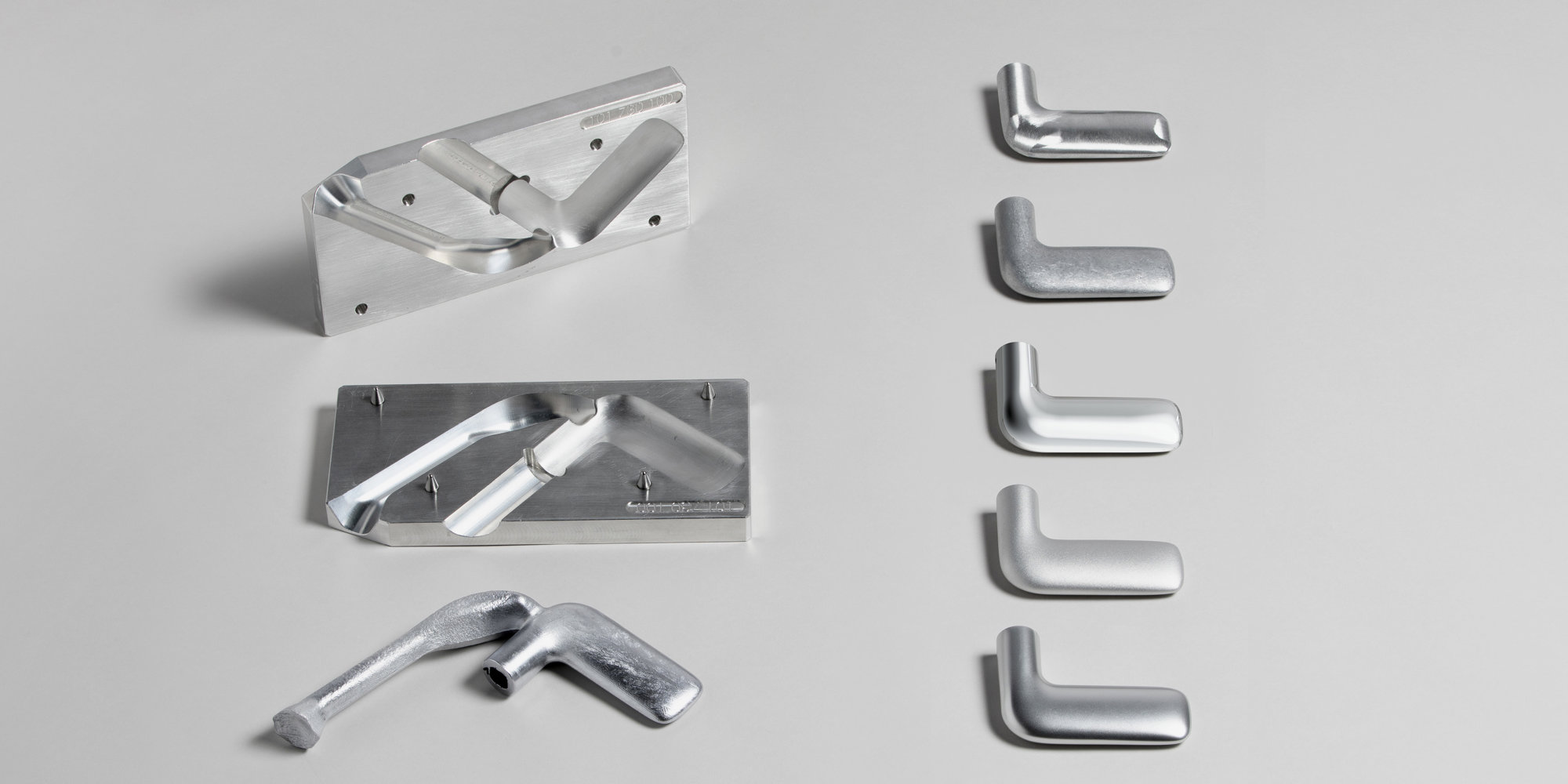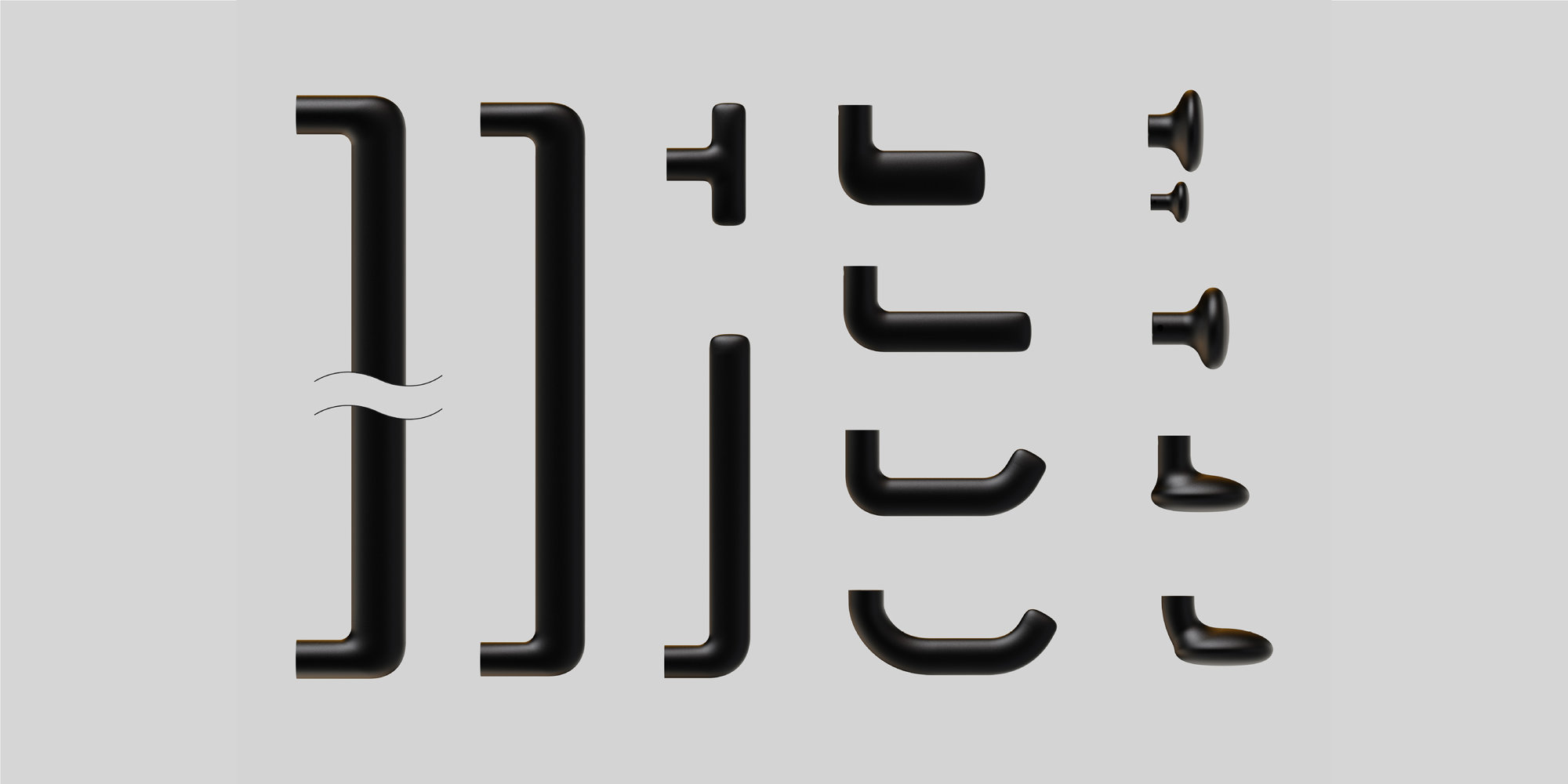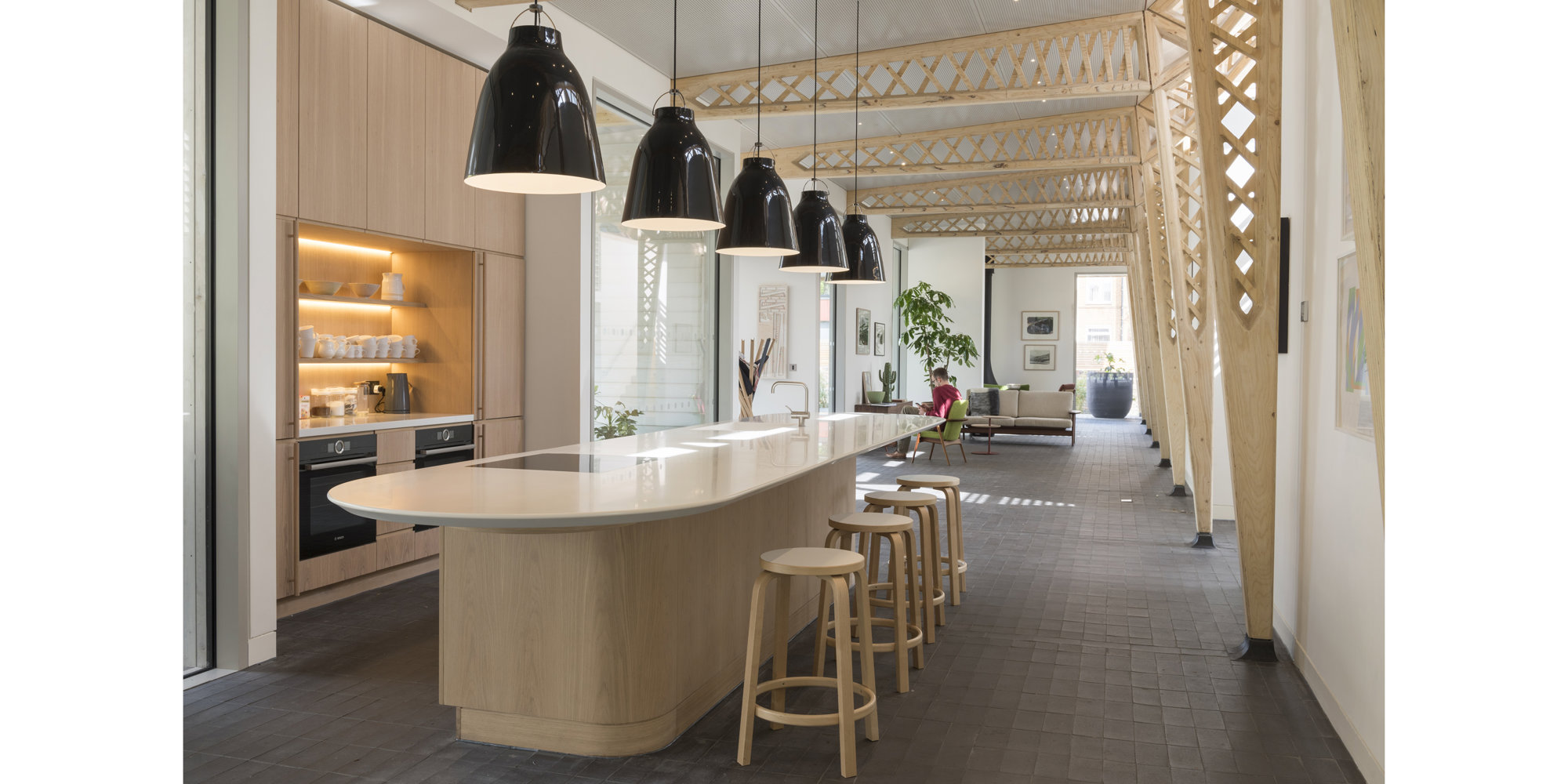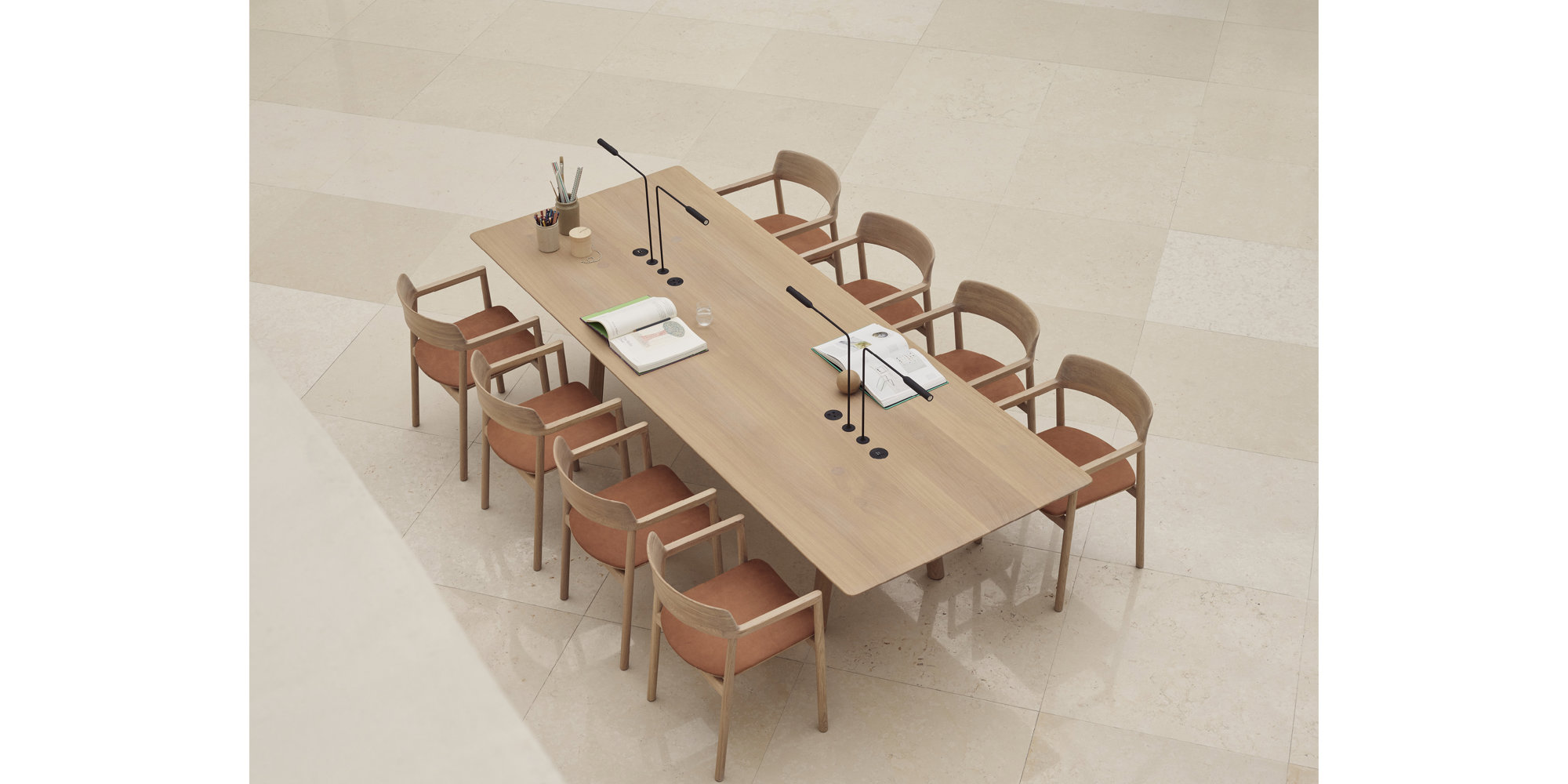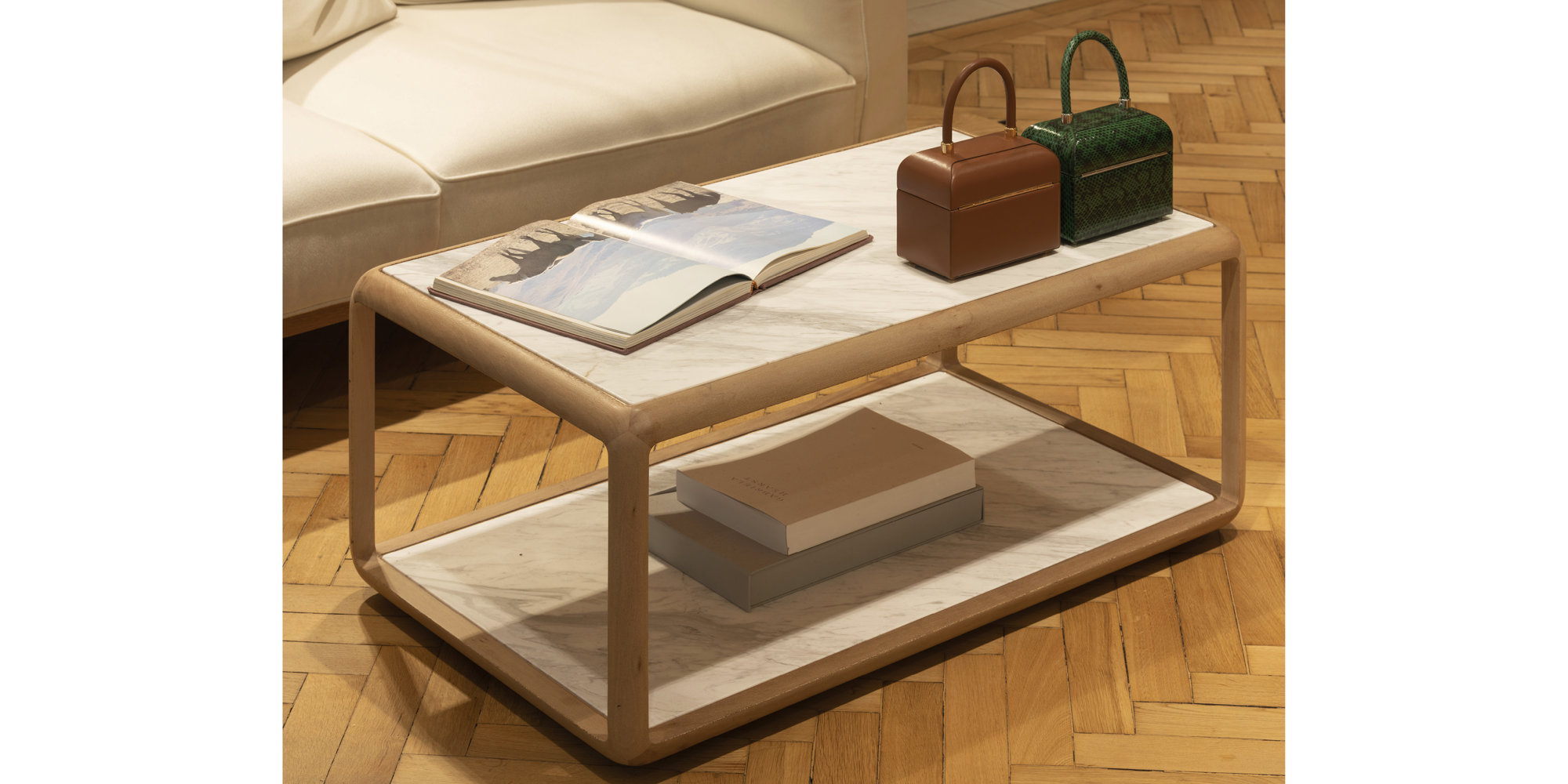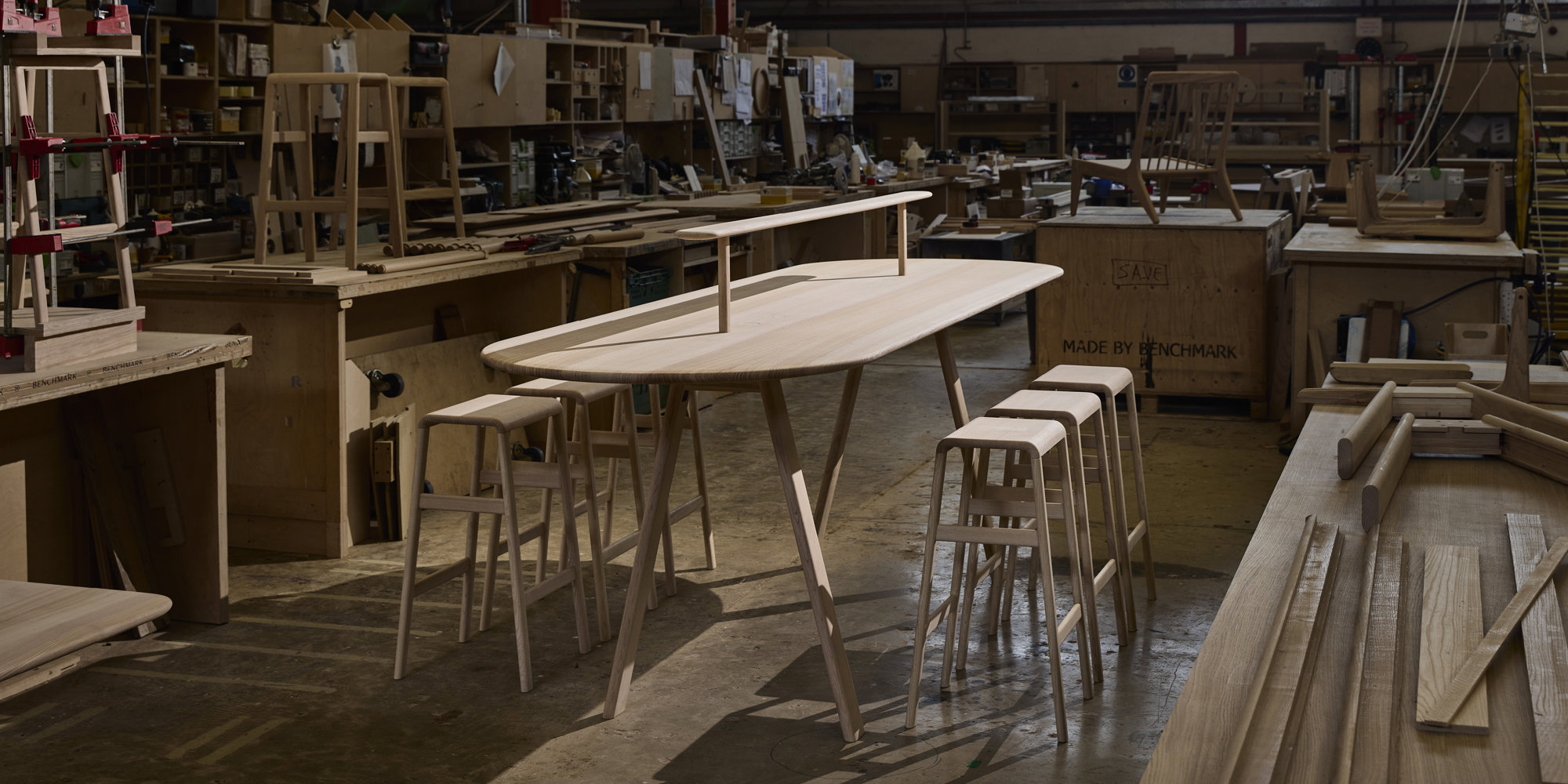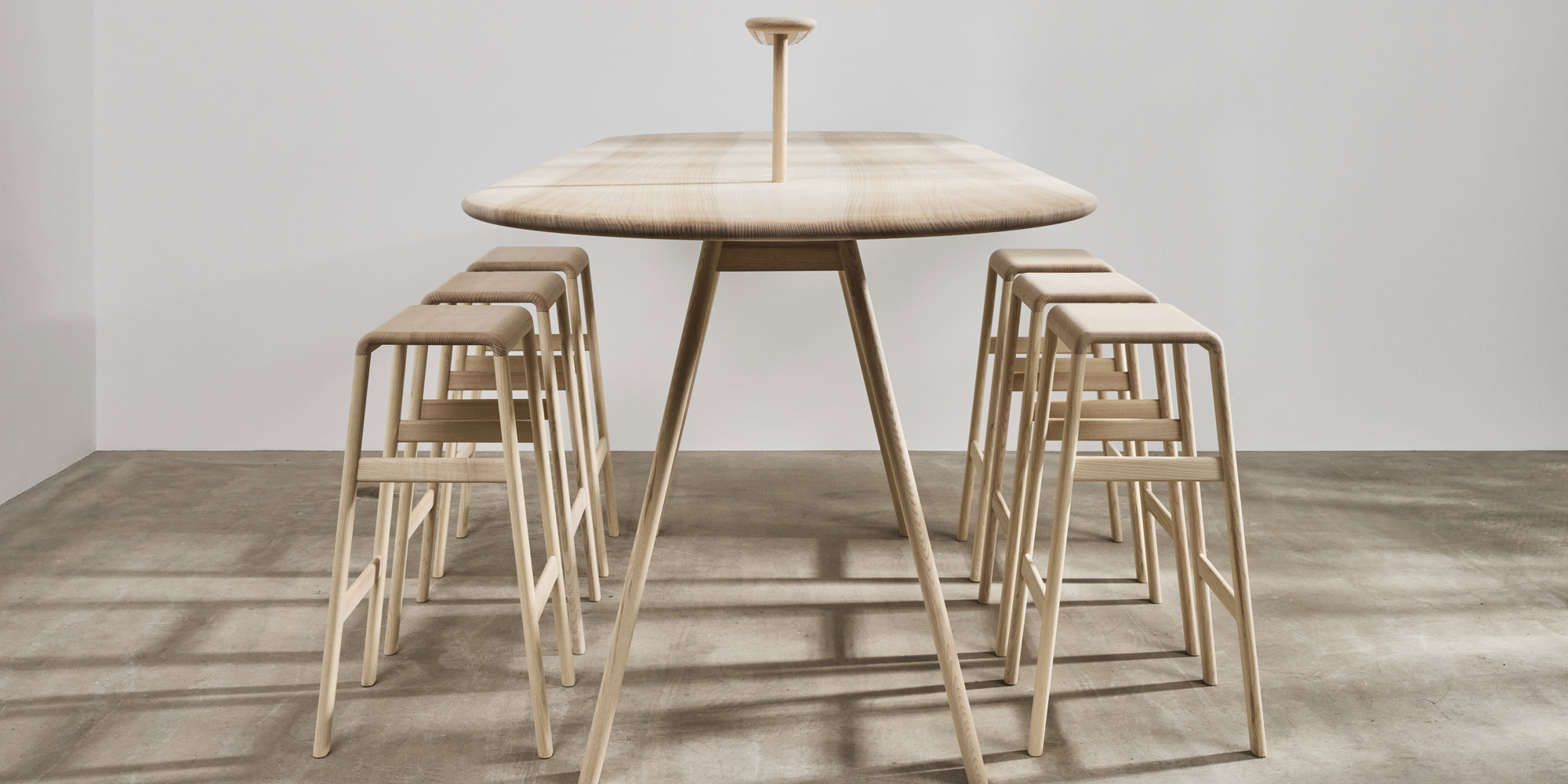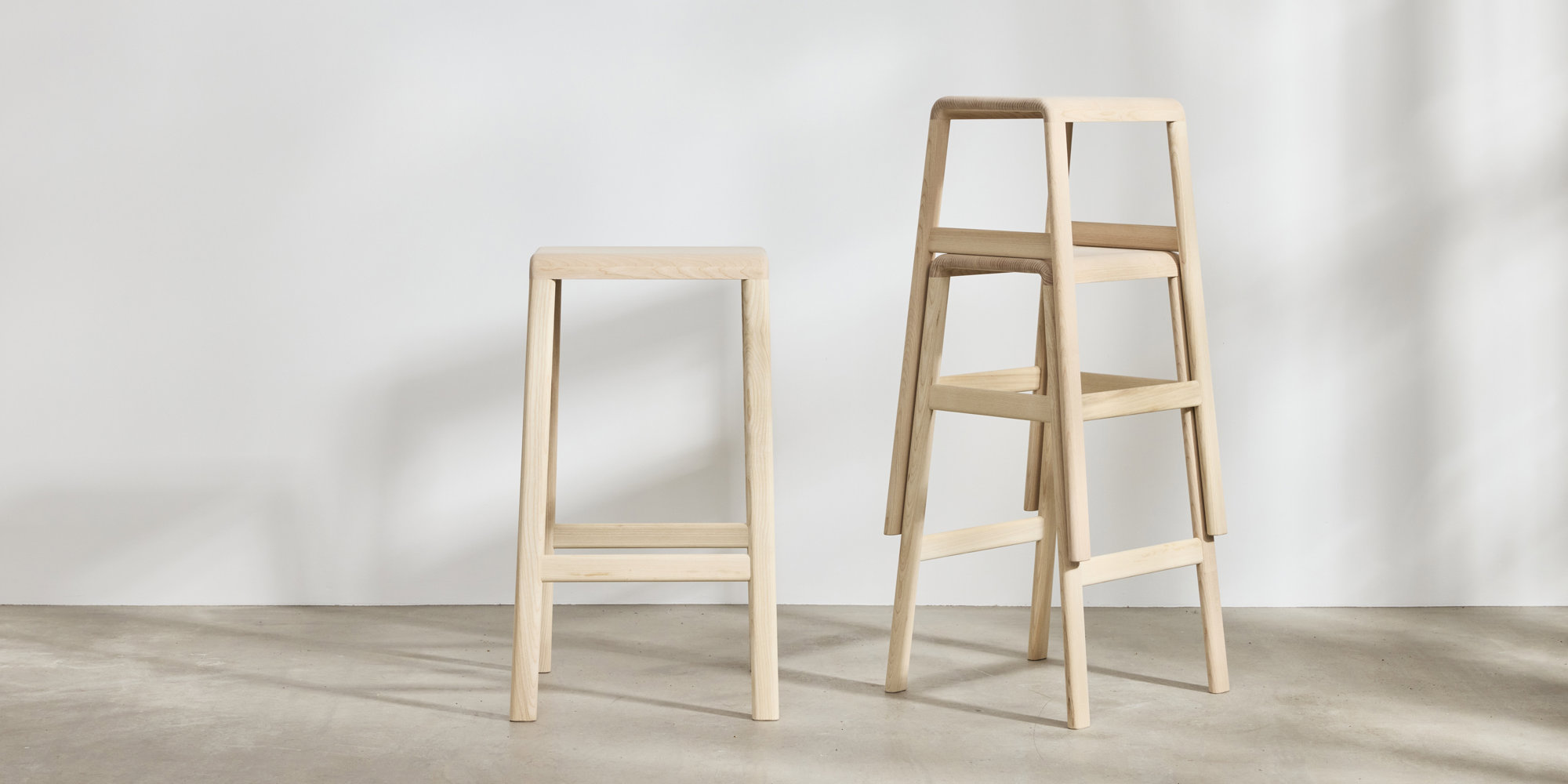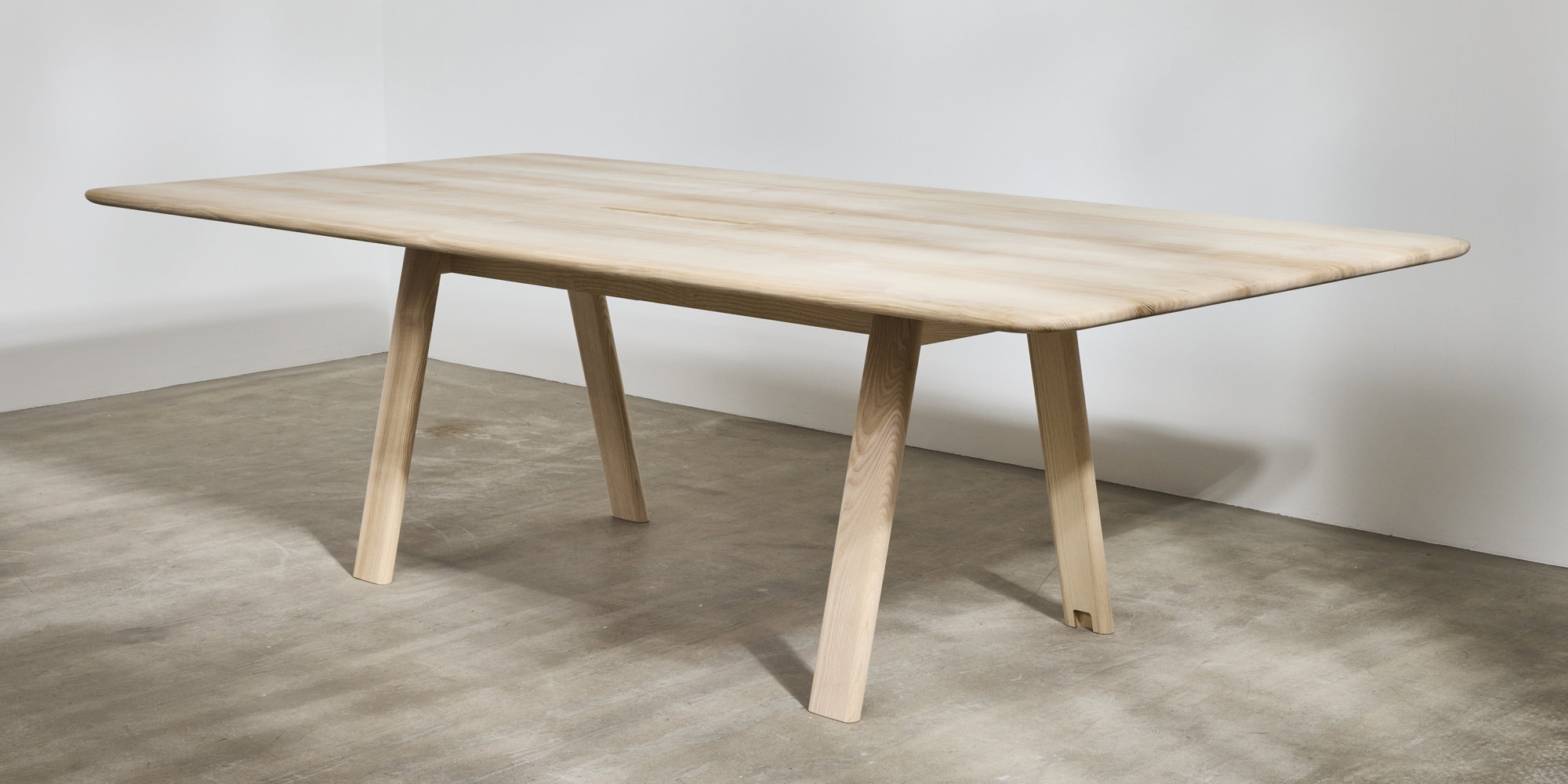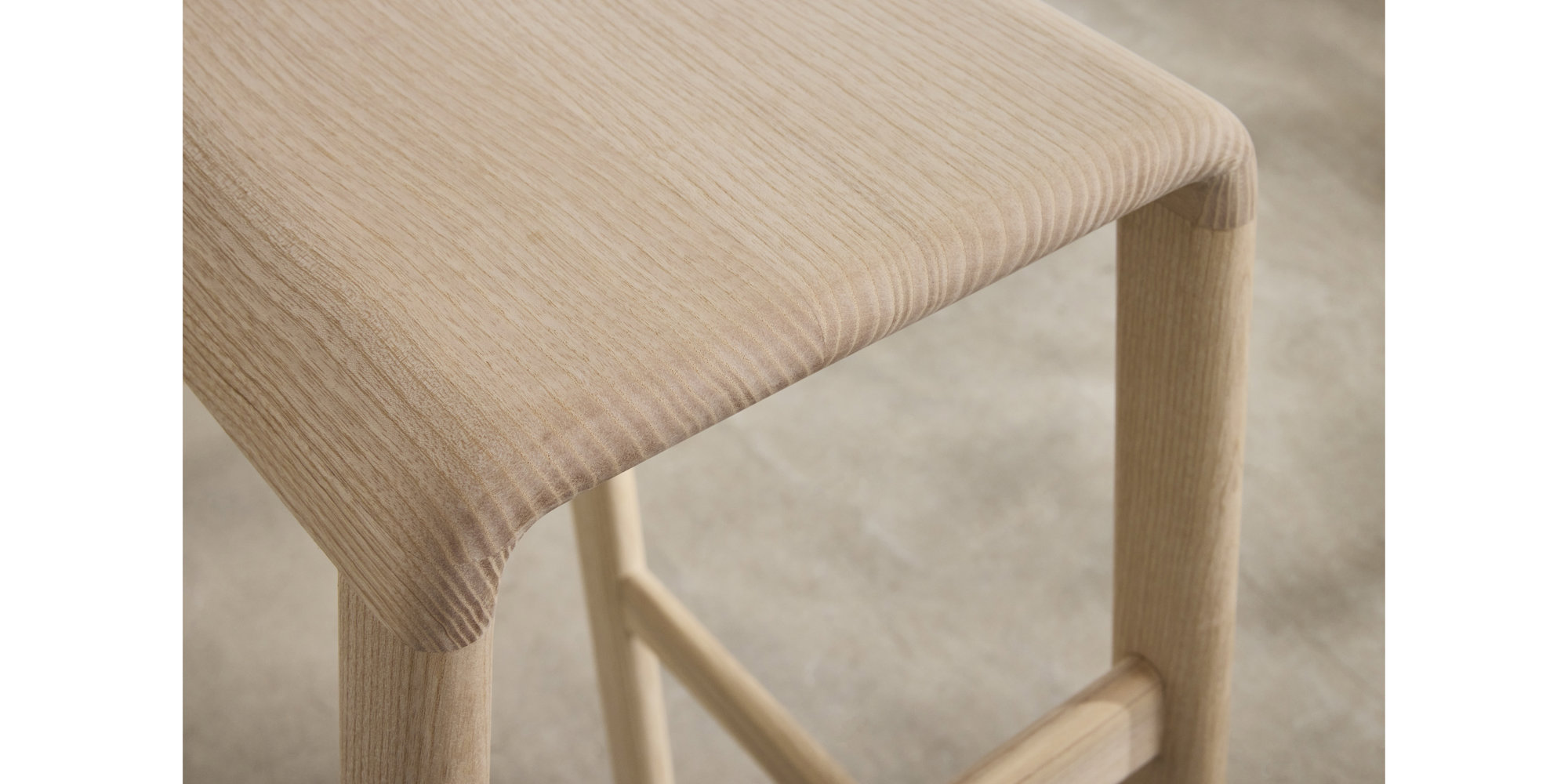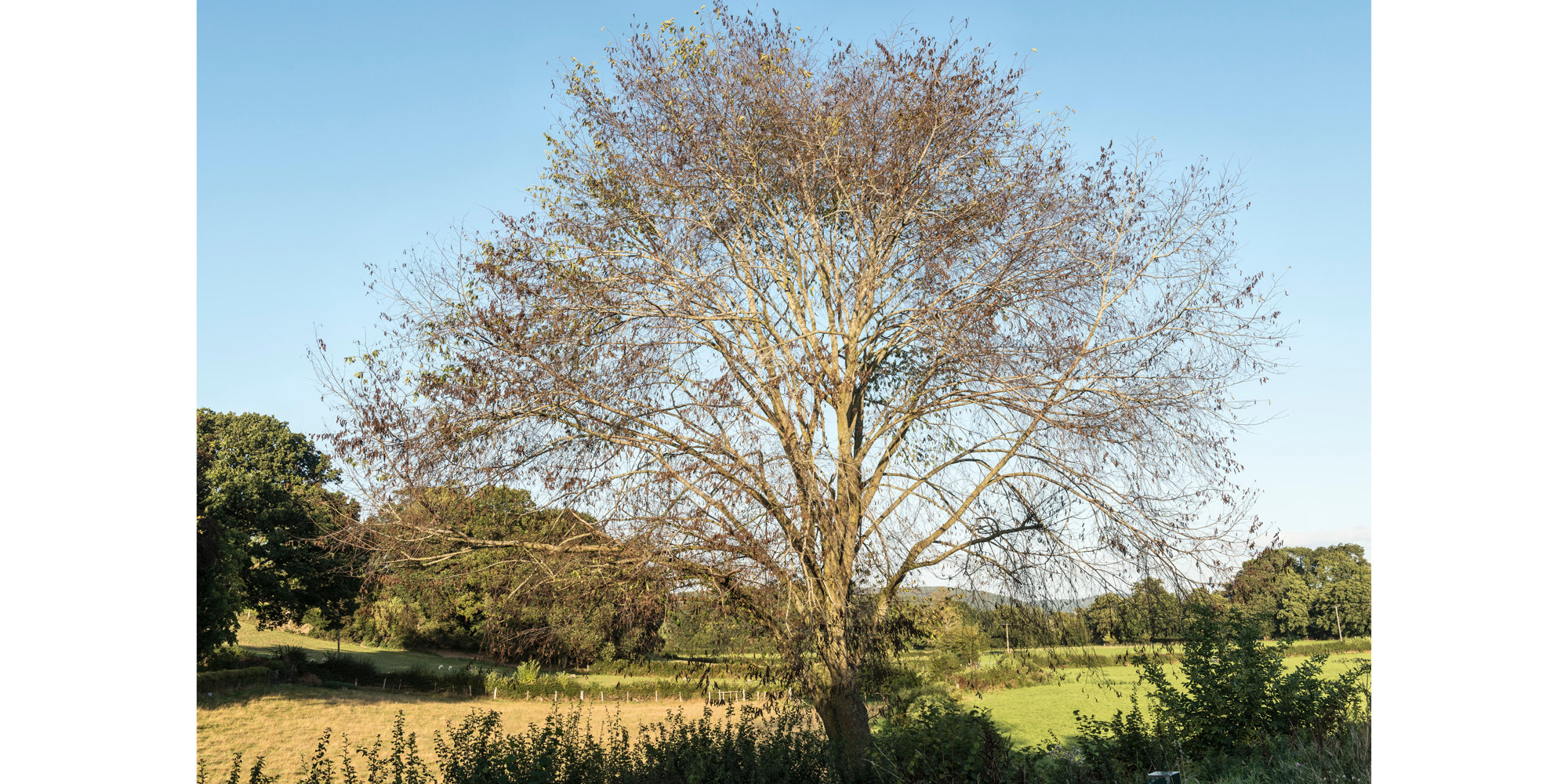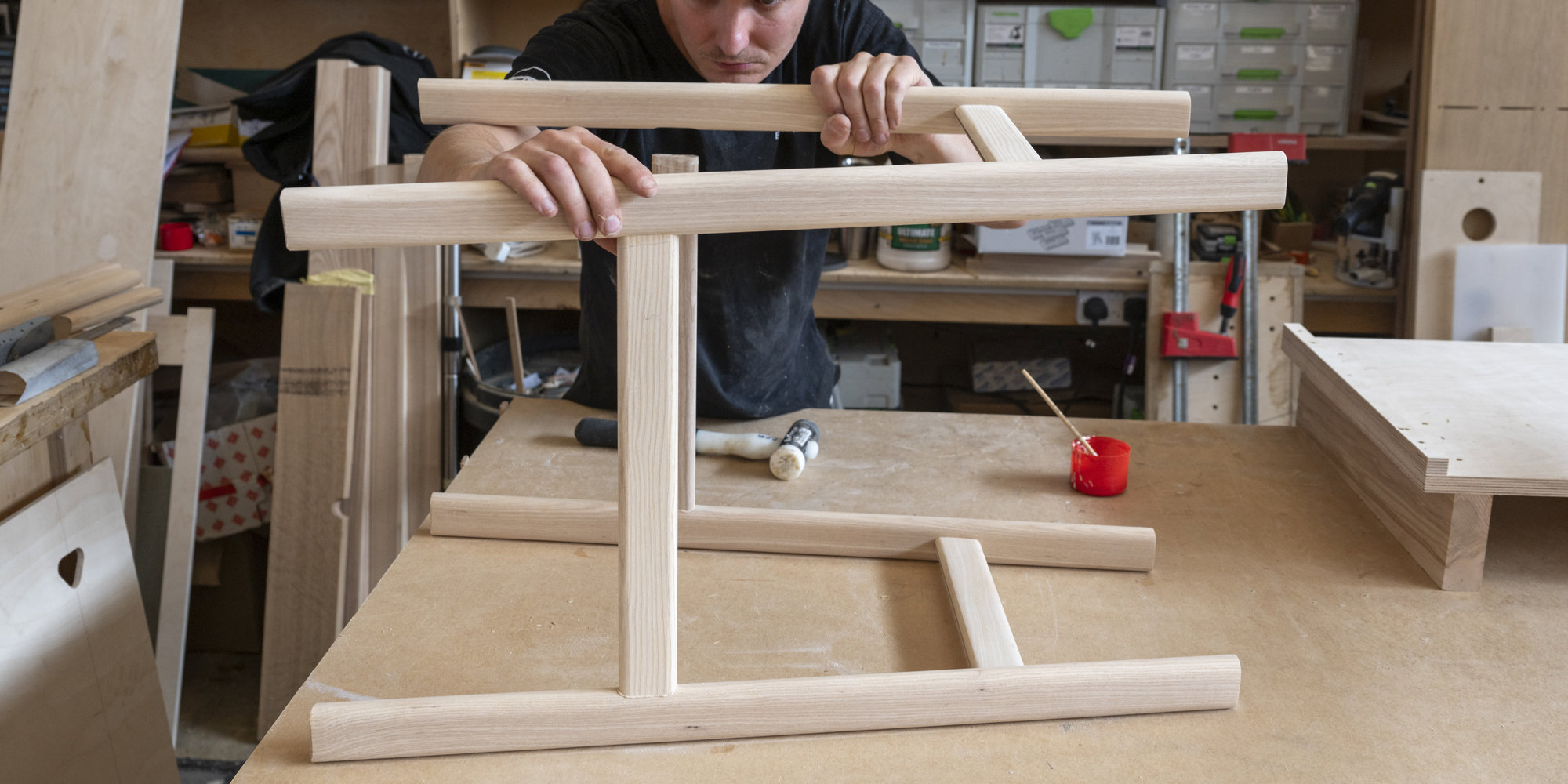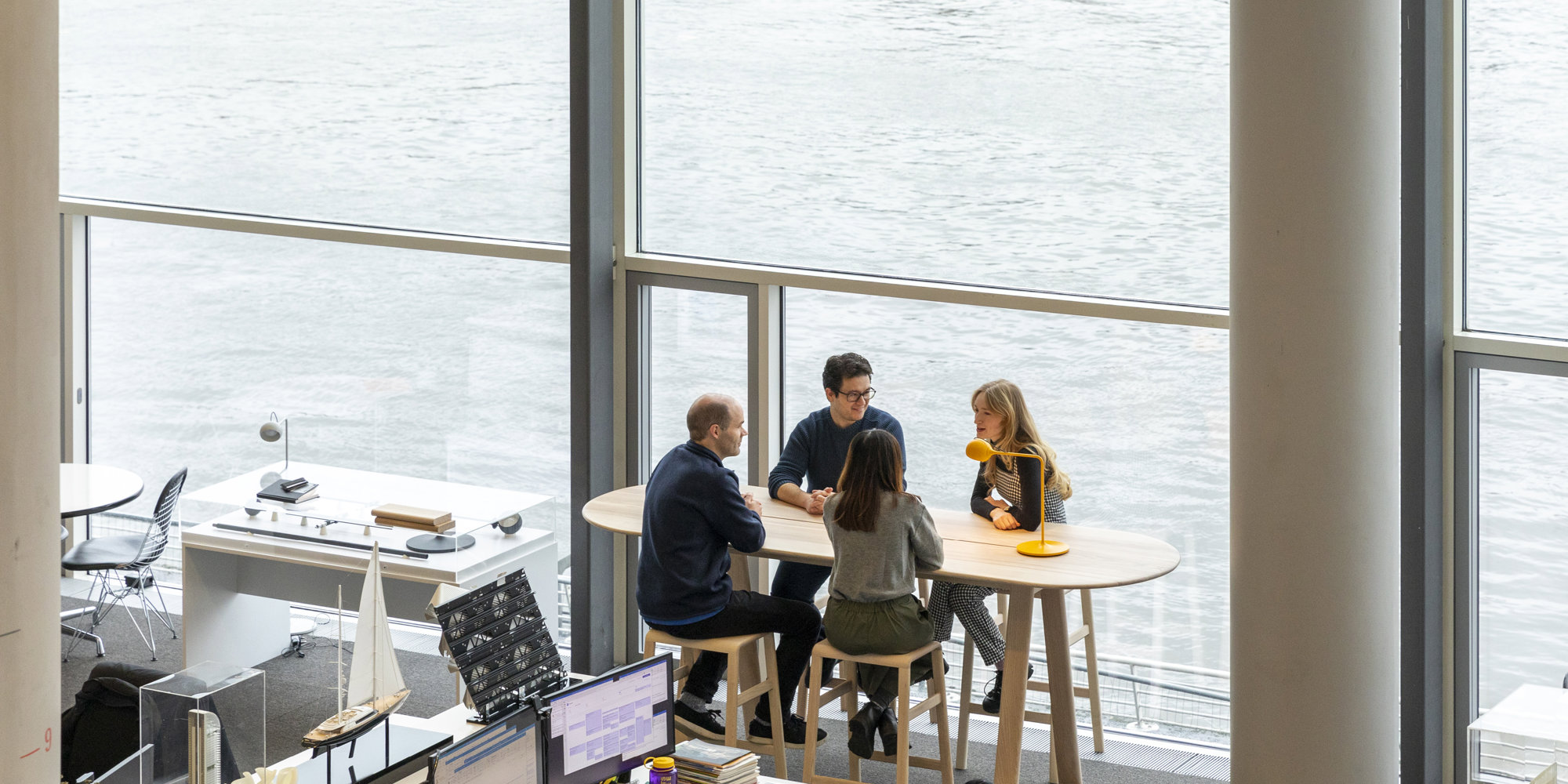Foster + Partners Industrial Design works closely with and extend the architectural aspects of the practice. Over the years, the team has developed a sustainable, materially-conscious approach to industrial design, which can be observed in their recent collaborations with German hardware manufacturer, FSB, and English furniture maker, Benchmark.
20th February 2024
Evolving and Sustaining Forms: Industrial Design at Foster + Partners
Since its founding in 1967, Foster + Partners has worked with an integrated design logic that brings architecture into contact with its surrounding and related disciplines. This was, and remains today, reflected in a studio that houses a wide range of specialists – all operating under the versatile and somewhat elusive term design. One such discipline, which often works closely with architecture, is industrial design. Though distinct in terms of professional certification, training, and output, architecture and industrial design are practices that repeatedly necessitate, cross into, and re-interpret one another. Within Foster + Partners, our industrial design practitioners are guided by a shared love of and objective towards elegant, innovative, and sustainable design – from the broad scale of an urban masterplan or heritage project, to the essential details of the tables and doorhandles within.
As industrial designers working within an architecture studio, our projects often occur in the territory between, evoking and extending the studio’s architectural aspects. In this way, the Industrial Design team both participates in, and branches out from Foster + Partners’ architectural practice. Our approach stems from the ethos of the practice as it was established in 1967: designs that integrate technical and manufacturing expertise with a social and human-centric purpose.
Since its founding, Foster + Partners has combined various design practices, evolving a complex ecosystem of specialisms. In 1978, the Industrial Design team was established with designer Arek Wozniak with the aim to support and reflect the work of the practice’s architects. Since then, the team has developed a wide range of products from door handles to wind turbines; from a fountain pen to the cabin of an executive jet; from a tap to the fit-out of an ocean yacht. Frequently, products are designed in response to a particular project, but the team also work directly with clients on product commissions or with companies to develop new products for commercial manufacture.
As industrial designers working within an architecture studio, our projects often occur in the territory between, evoking and extending the studio’s architectural aspects.
One notable example is our Soft Cells wall and ceiling system, first developed for use in the Swiss Re headquarters at 30 St Mary Axe, London, in 2004. Using tensioned fabric panels, the Industrial Design team combined the aesthetic benefits of high-quality design fabrics with highly effective acoustic and ventilation performance, enabling architects and interior designers to control light, softness, colour and sound for a more enjoyable workplace. The success of this installation led to a subsequent collaboration between Art Andersen and Kvadrat, and the product has since been manufactured for use in a wide range of commercial and public buildings.
Since the early years of the practice, we have evolved this social and technical framework, with a particular change coming over the last decade. Today, our work signals a turn towards objects that are not just perfectly formed, but also appropriately informed – primarily by questions of carbon expenditure and sustainability. This is work that challenges our expectations of ‘design’ in the twenty-first century.
Two recent projects communicate this emerging design language: Foster + Partners’ collaboration with FSB (Franz Schneider Brakel), a world-renowned German hardware manufacturer, to make a series of door handles; and the AYA collection, a family of office furniture made in collaboration with the English timber furniture maker, Benchmark. Linking these two seemingly separate product ranges –doorhandles and office furniture – are two core aims that illustrate this new phase of Industrial Design within the practice: firstly, an acknowledgement of the material at hand, and secondly, a deep commitment to thinking sustainability about these materials.
FSB x Foster + Partners: Remodelling the Handle
Foster + Partners Industrial Design collaborated with FSB to create a series of handles. These were designed and manufactured by and for the hand. Taking an ergonomic approach that considered the comfort and compatibility of both hand and handle, we gravitated towards a shorter and deeper surface, where a palm would rest naturally. We named this the ‘palm handle’. This was not only an exciting new typology for us but for FSB, who are renowned leaders in bespoke handle design.
This analogue approach was then followed by a process known in architecture as ‘post-rationalisation,’ where we used digital tools to outline a specific geometry in accordance with the initial, free-ranging design. Our process for these handles’ design involved using hand-drawn splines, to generate a more crafted, tactile geometry. These splined forms were then explored and refined, first in cardboard, then foam, then later using CAD (Computer Assisted Design) and 3D printing. This was of great use in the design stage when on-site visits and international travel were limited by the pandemic. It also worked in step with our belief that we must work with 3D models and real materials first; mocking things up quickly generates debate and conversation as the real-world size and weight of an object can be tested. The practice’s ability to move from sketch, to mock-up, to a final, beautiful, printed form – that could be packaged and delivered for review – enabled the handles' design to develop with FSB despite the obstacles caused by the pandemic.
The handles were soon manufactured by FSB using Hydro REDUXA low-carbon aluminium. This consideration of material was an essential aspect of the handle’s design. As Markus Michalski, manager of ‘Design + Innovation’ at FSB stated:
‘Circular materials are the key to a sustainable future, and FSB only works with materials that are fully recyclable like aluminium, stainless steel, and bronze. The aluminium products within this Foster + Partners collection stands out as a significant step toward sustainability – with a 75 per cent lower CO₂ footprint than the global average. In the future, we will place greater emphasis on surfaces that are authentic and untouched, such as the Aluminium Pure surface from the collection, which serves as a visible representation of this sustainability.’
It was extremely rewarding, once covid restrictions had been lifted, to be able to observe the production of these handles at FSB’s factory. Not only did we witness the craftsmanship involved in such metalwork, but we were able to see old aluminium shaped into new forms, and artfully so.
The manufacturing process in the FSB Ironmongery in Germany. © Aaron Hargreaves / Foster + Partners
The manufacturing process in the FSB Ironmongery in Germany. © Aaron Hargreaves / Foster + Partners
The manufacturing process in the FSB Ironmongery in Germany. © Aaron Hargreaves / Foster + Partners
During its manufacture, each handle is treated to give its surface the desired effect. This treatment process can be divided into six stages: spur cut off; ground; vibration ground; polished; bead blasted; anodized. We measured the energy consumption of each stage of this process and found that stopping halfway – at the vibration ground stage – reduced the energy consumption of the handle by 37 per cent. This method of tracking allowed us to pause and to consider what stopping at this stage would mean – in ways that might not have occurred to us without such calculations. This version of the handle, we believe, is particularly enigmatic as a result. It is moulded with a history of its development, unafraid to display its idiosyncrasies, yet still beautifully crafted. A reduction in mechanical influence on the handle, we believe, has led to a reduction in its mechanical finish. This is a key example of questions of sustainability directly influencing a design’s final look and feel, asking us to reflect on each stage of our manufacture; beyond the function and symbolism of the handle, we had to consider the sustainability of the manufacturing process.
The collaboration with FSB also developed in other ways. The palm handle, because of its refined relationship with the hand and sophisticated form soon became the basis of a broader range. A genealogy emerged, including a lever handle, safety handle, cranked lever handle, and doorknob, coat handles, and window handles – all genetically linked with the palm handle design. The complete collection meets the diverse requirements of modern commercial and residential buildings and can therefore be fitted within any building around the world. The versatility of this collection, underpinned by shared formal language, can bring visual, material, and tactile continuity to a space – or a series of spaces.
From a design brief as deceptively simple as the handle, our collaboration with FSB organically matured into in a range that is both coherent and versatile. By uniting manual processes with cutting-edge digital and manufacturing tools, we were able to integrate an appreciation for the handmade with a commitment to sustainable manufacture, while delivering the highest quality designs possible.
Beyond the function and symbolism of the handle, we had to consider the sustainability of the manufacturing process.
We can apply cutting-edge technology to hone and deliver our designs and meet the practice’s extremely high bar for quality and specification. However, it is not technology that dictates our process, but rather, a questioning how technology can help us to create more sustainable, elegant, and meaningful designs. Far from sending drawings to a manufacturer and expecting a final prototype to magically appear, the team are wholly integrated in the process, working closely with suppliers, craftspeople, manufacturers, and sustainability consultants throughout. It is also by working on the shop floor with these other specialists – such as FSB – that questions of sustainability become more tangible, more pertinent, and the real-world consequences of our manufacturing processes become apparent.
Benchmark X Foster + Partners: Furnishing the Workplace
Leading with the material, working closely with teams, and developing an acute awareness of sustainable impact is key to our approach. This is evident in our work with Benchmark – a British timber furniture manufacturer that the Foster + Partners Industrial Design has been in collaboration with for over a decade. Our projects include pieces for Maggie’s Manchester, a place of refuge where people affected by cancer can find emotional and practical support; this led to the OVO collection, which celebrates craftsmanship in everyday objects; furniture for the Samson Pavilion in the Cleveland Clinic, one of the leading teaching hospitals in the United States; and a bespoke range for Gabriela Hearst’s London flagship store.
Maggie’s Manchester, with timber furnishings developed with Benchmark. © Nigel Young / Foster + Partners
Most recently, we launched the AYA collection, which enables flexible working in the office. The AYA range includes dining and conference tables, a high collaboration table (with and without a reading light), and stools, and like FSB, is designed with versatility and longevity in mind. Though seemingly separate from the FSB collaboration, a material distinction hides a comparable design ethos.
AYA high conference table (with reading light) and stools in the Benchmark workshop. © Benchmark
AYA uses solid sustainably sourced GiB (Grown in Britain) ash, a tree native to Britain and intertwined with its folklore and cultural heritage. Today, ash is in uncommonly great supply as a result of the fungal disease ash dieback (Chalara fraxinea), that has prompted a nationwide felling of the trees. While environmental research groups (such as Kew Gardens and the National Trust) are working to regrow ash that is genetically resistant to this disease, the felled timber must either be used or discarded. This project was an opportunity to work responsibly and creatively with the unfortunate decline of the ash species, and to extend the lifespan of timber that would have otherwise degraded. AYA becomes something of a narrative object, registering and communicating the ecological changes in our environment, its surface beautifully foregrounding the knots and rings of the tree that came before.
Ash is, in fact, one of the best woods for indoor furniture and timber joinery. It has a greater strength-to-weight ratio than oak and is lighter and cheaper; it is shock resistant, stains and colours evenly, and can be worked easily by hand or machine, with an open grain structure that gives it a truly ‘woody’ feel. This makes it one of Benchmark’s ‘favourite woods to work with,’ according to their Founder and Chair, Sean Sutcliffe.
Our long running collaboration with Benchmark has taught us invaluable lessons on sustainable timber. We had worked together on Environmental Product Declarations (EPDs) and certifications that could consider the full life cycle of a product – including what happens at the end of its life. This is not only a far more challenging and interesting way to work but seems, increasingly, to be the only way to work – given the climate crisis and its relation with the overconsumption of resources.
Ash tree in the Peak District National Park, Derbyshire, UK. Ash has been Britain’s second most common hardwood species, with some 120 million trees in woodlands, and a further 50 million trees in sites such as hedgerows, fields, and gardens (National Forest Inventory, 2014). It is a tall, recognisable tree in our landscape, up to 35 metres, that comes into leaf in late April. It has three to five pairs of spear shaped leaves with one terminal leaf on each leaf stem. In winter it is easily recognised by its smooth twigs with black buds. © Alamy
This is not only a far more challenging and interesting way to work but seems, increasingly, to be the only way to work.
The AYA range is arguably the fullest articulation of this philosophy. It is presented with full carbon footprint labelling, a ‘Lifetime Repair Service’ offer, and a ‘Take Back Scheme’. Every piece is designed to be easily disassembled for repair and finished with natural oils to facilitate refurbishment, allowing the pieces to be in use for several lifetimes. These oils are also low VOC enabling the collection to be awarded a Red List Free Declare Label, which certifies that AYA does not release any toxic emissions.
To reduce waste and minimise release of carbon stored we embraced the natural variation of character within the ash, allowing the timber to simply be timber, rather than discarding quality materials to achieve a standardised, uniform effect. In doing so, the team productively challenged an inherited sense of material ‘perfection’ to create something alert and alive with meaning. A great deal of skill is involved in working in this way, which we view as an opportunity for growth, rather than a point of contention. As Martin Penrose, Managing Director at Benchmark, puts it:
‘We align [with Foster + Partners] on our love of a challenge – of not being put off when things don’t work first time around. That’s particularly important when working with solid timber, which requires time and patience to get right. Anyone can cut up a bit of wood and screw it together – but it’s a challenging material to master. There are no two trees alike, no two bits of wood the same, and every species reacts differently.’
Since its installation in Foster + Partners’ London office, AYA has integrated well into the practice and used by a range of designers, who require and benefit from its flexible and adaptable workspaces. With the ‘library light’ option, for example, AYA can offer space for quiet, independent work; without this light, AYA encourages animated group discussion: its soft, curved edges rounded specifically to invite approach and communality.
Designing Industry
Foster + Partners has, for nearly sixty years, sought to unite technical expertise with elegant and responsible design. As part of this practice, the Industrial Design team have continued to explore and test questions of form, structure, and material. With the support of Foster + Partners’ diverse range of architects, designers, engineers, consultants, and researchers – and our industrial collaborators both global and local – the Industrial Design team have learned to integrate and bridge across a wide array of design approaches. Across scales and projects, our work connects and extends such disciplines, linking craft with manufacture, architecture with industry. It is this unique approach that we pride ourselves on and that, like our products, we are always seeking to evolve and refine. Most recently, with both FSB and Benchmark, a growing branch of this evolution can be traced. Though seemingly separate endeavours, both projects are stories of a materially-foregrounded and carbon-conscious approach to industrial design. These final products are not only elegant and high-quality technical achievements - they communicate Foster + Partners’ longstanding commitment to thinking sustainably about design, and with this, thinking flexibly about what our designs might become as a result.
With contributions by Thomas Misse, Harry Owen, and Mario Ortiz Valverde.
Author
Mike Holland and James White
Author Bio
Mike Holland joined Foster + Partners in April 1995. As a Senior Partner and Head of Industrial Design, he leads a team of designers to develop commercial mass manufactured products, lighting, furniture, building products and transportation for clients across the globe. He also works closely with the architectural studios designing bespoke solutions for a diverse range of projects around the world.
James White joined the practice in 2007 and has since produced a wide portfolio of mass-manufactured products for leading international companies. His work also extends to the design of bespoke solutions for a variety of architectural projects and is a key player in transport design projects. He was promoted to Partner in 2014 and assists with the management of the industrial design team.
Editors
Tom Wright and Clare St George
